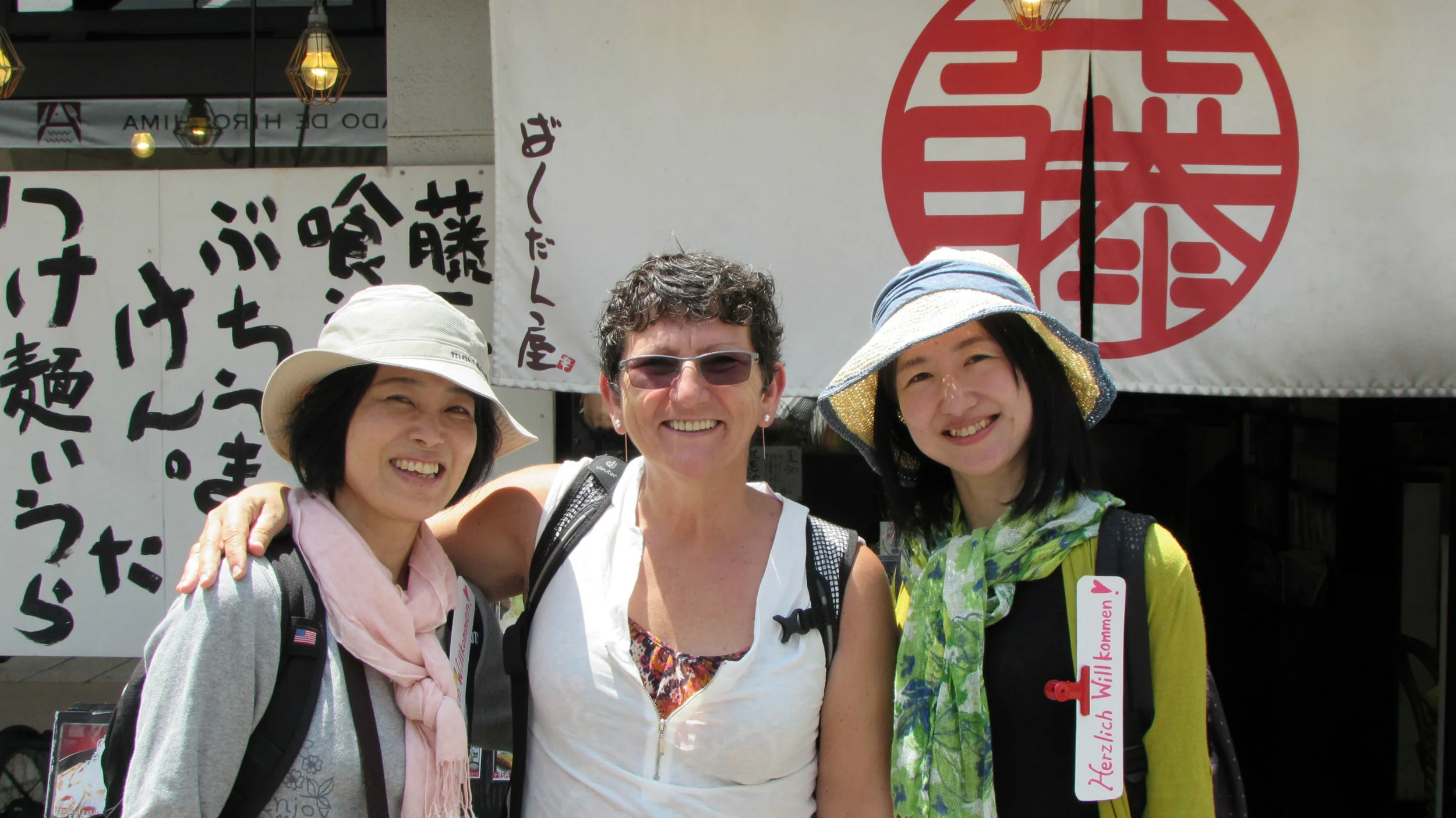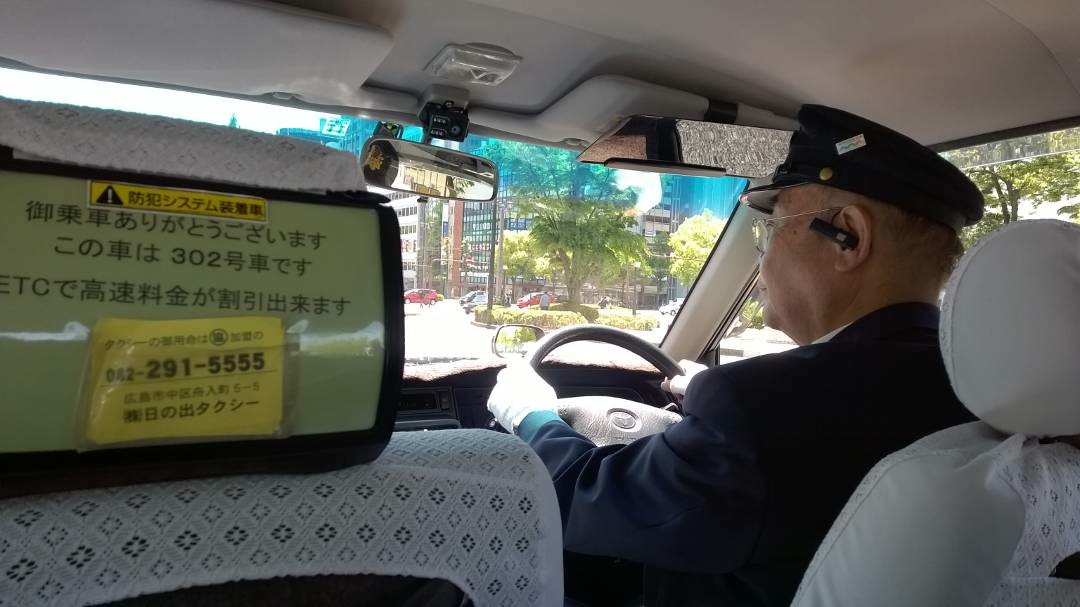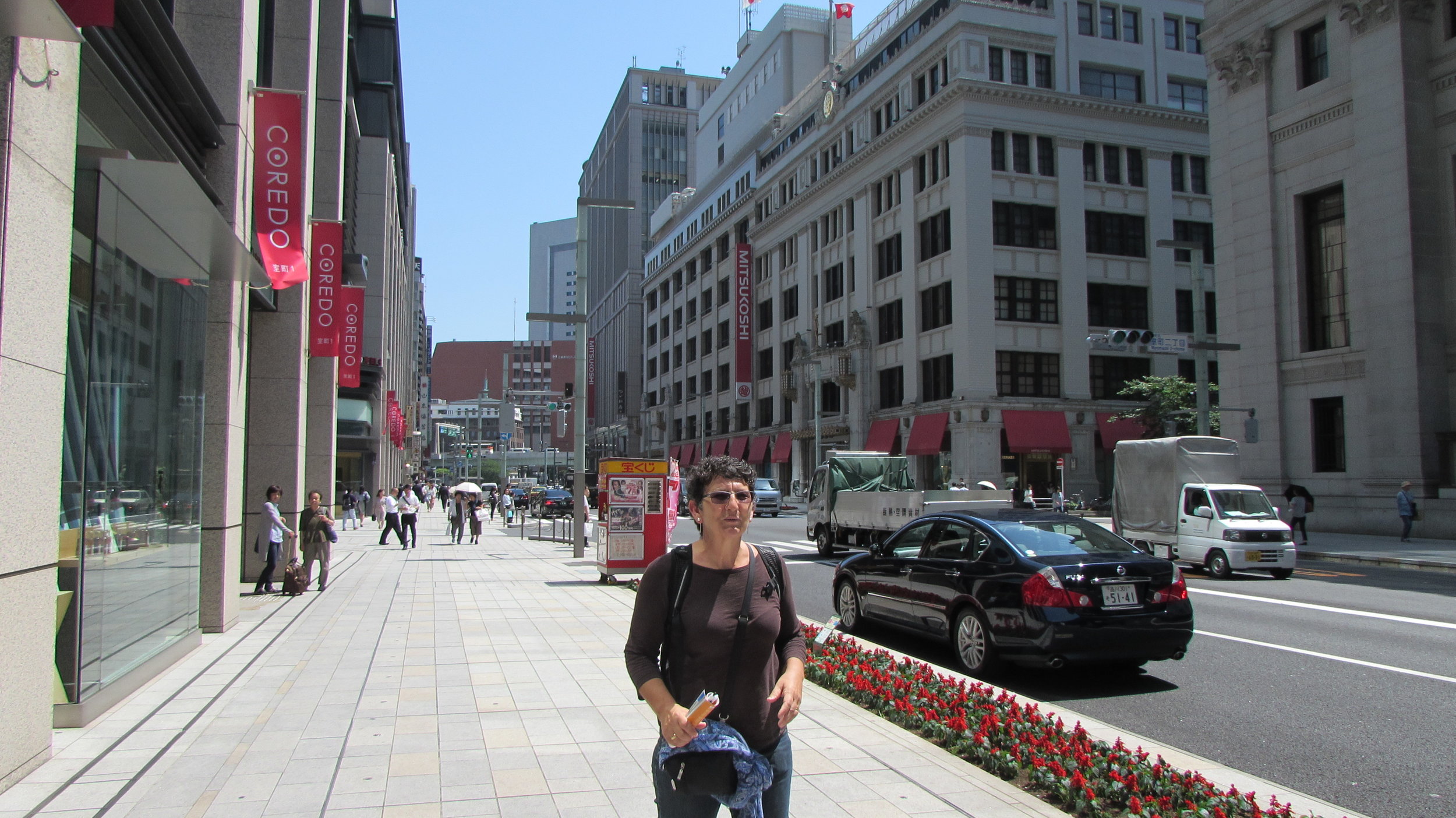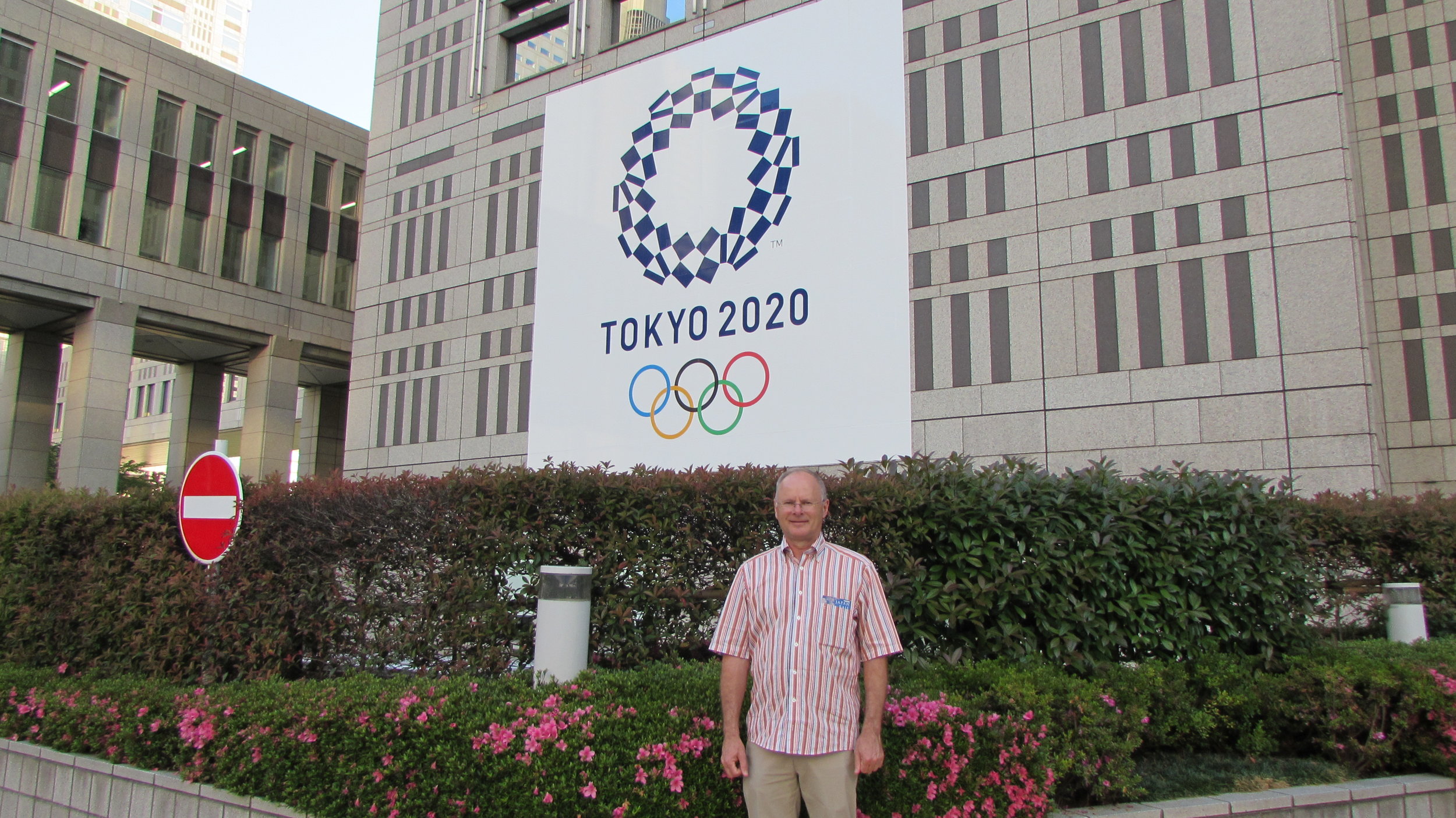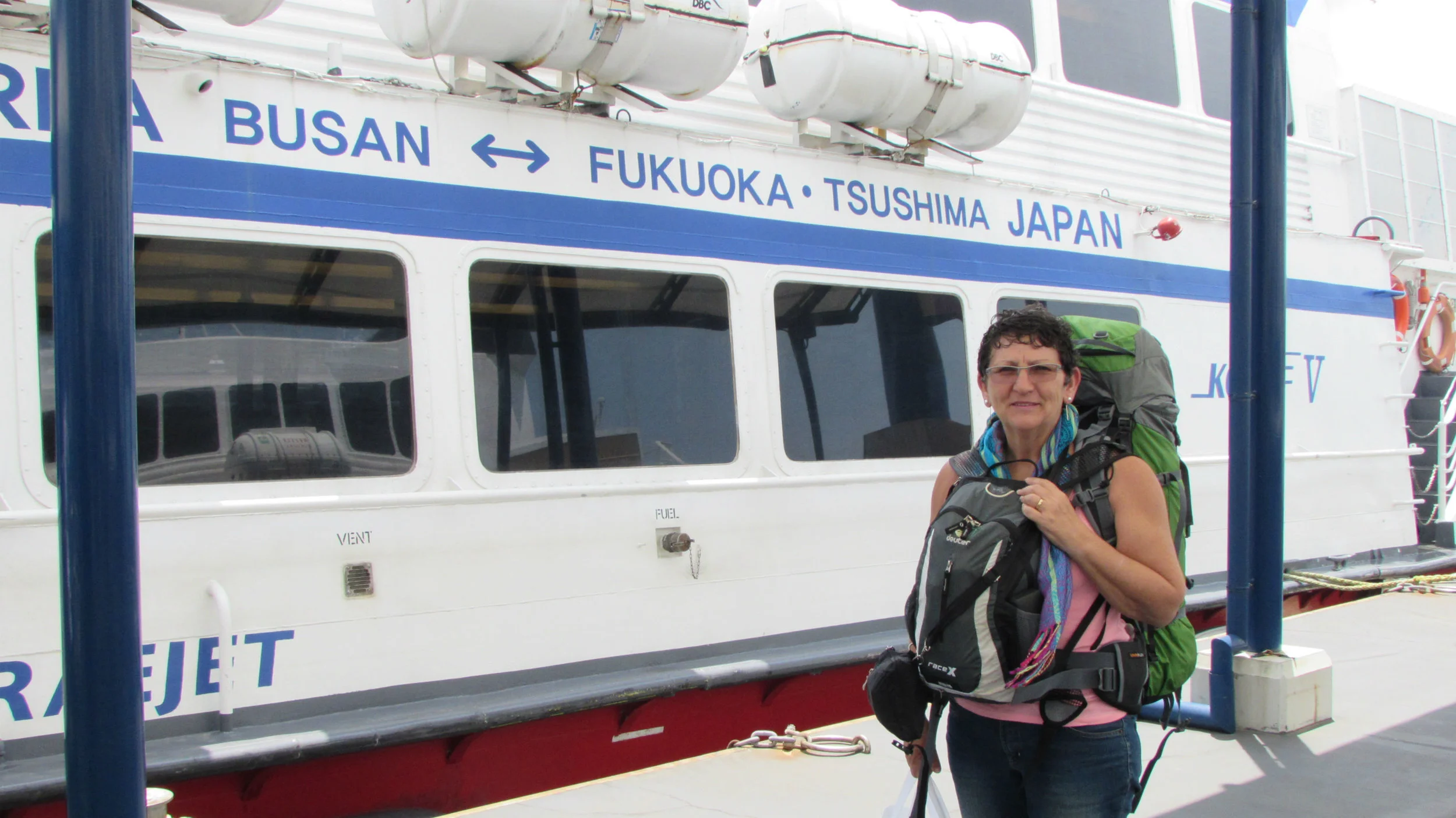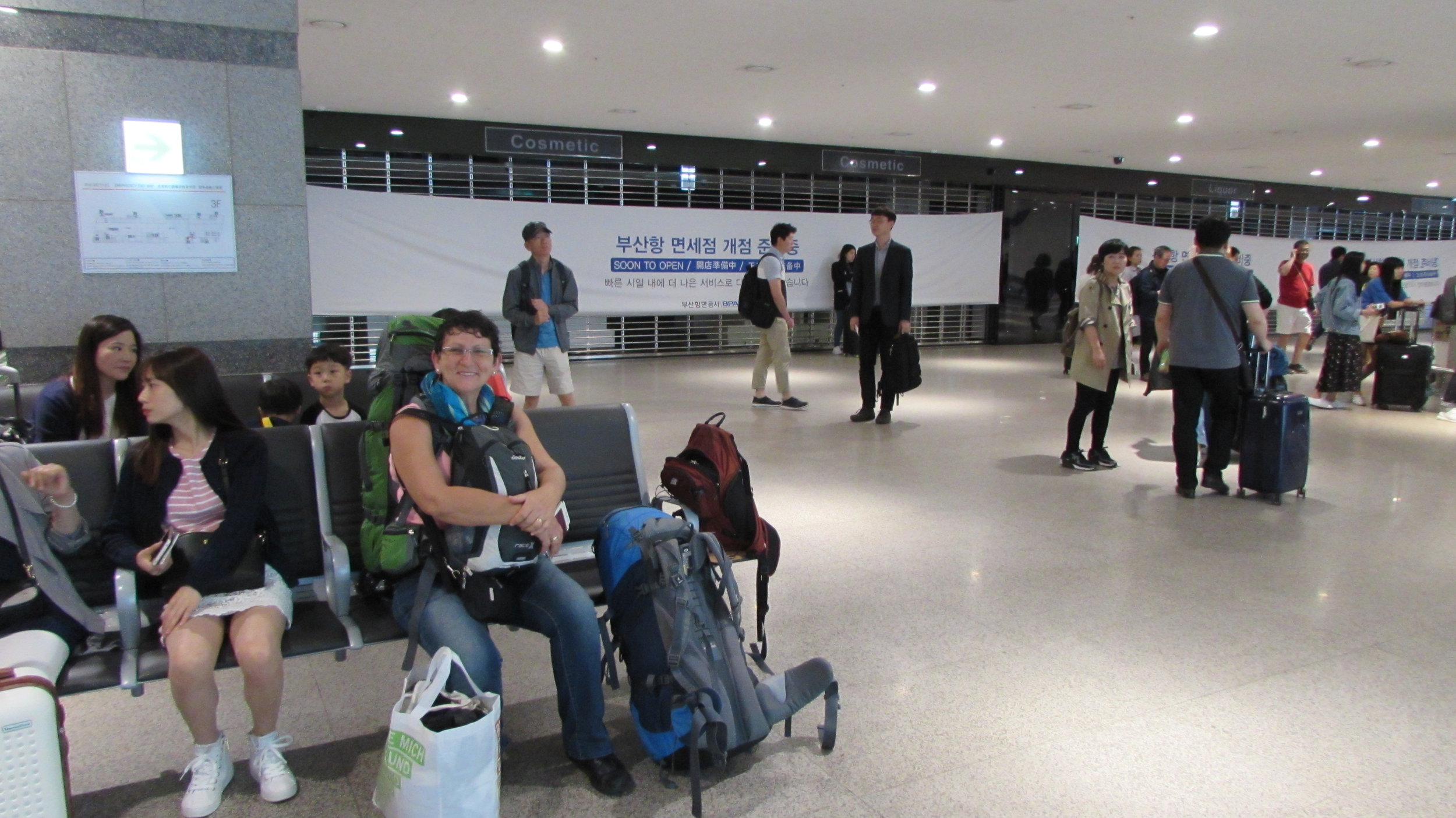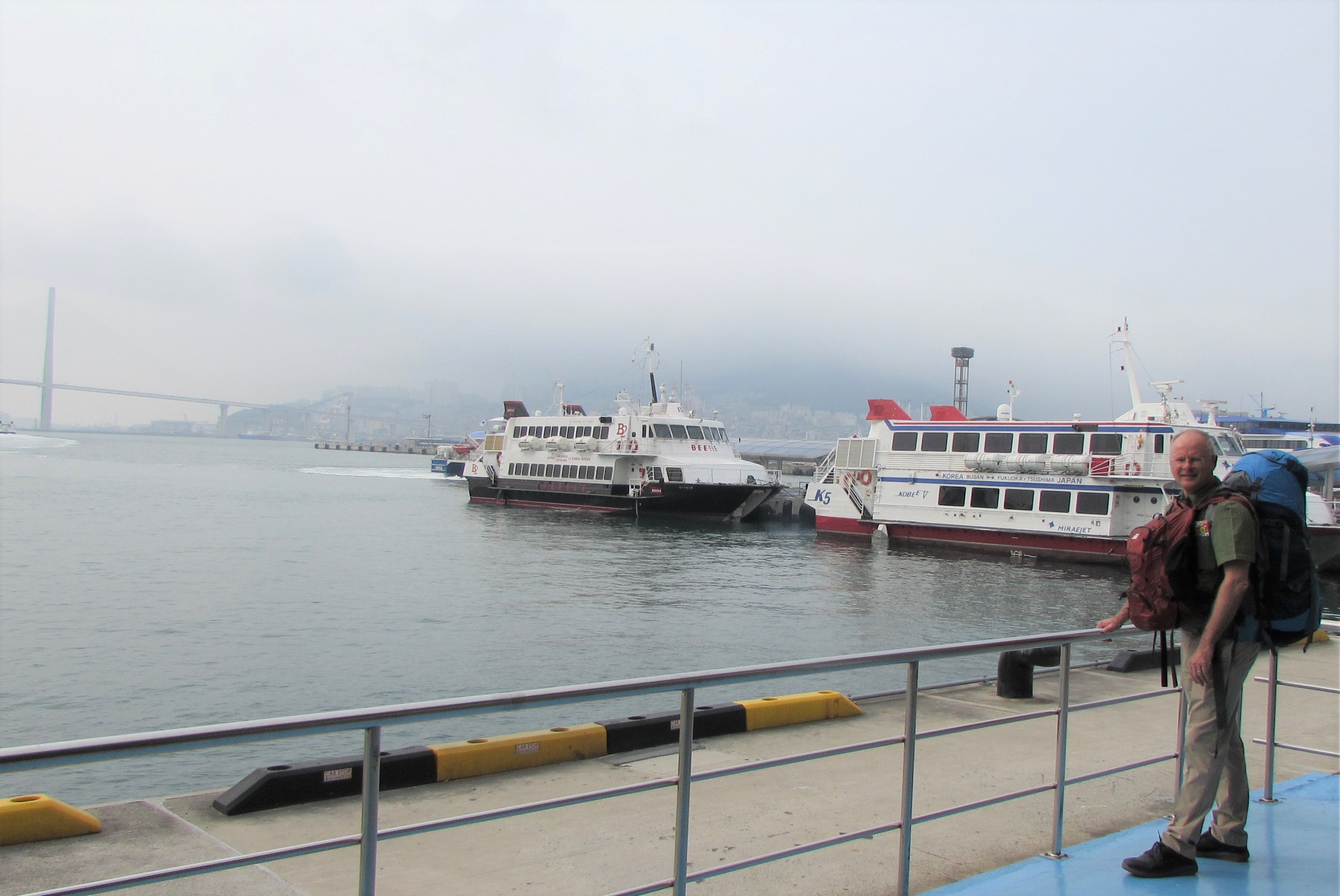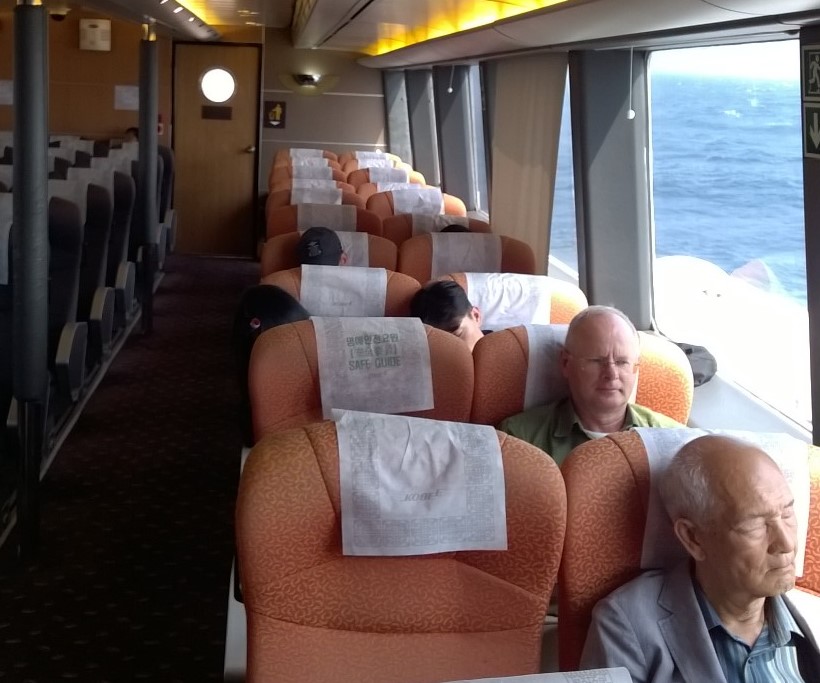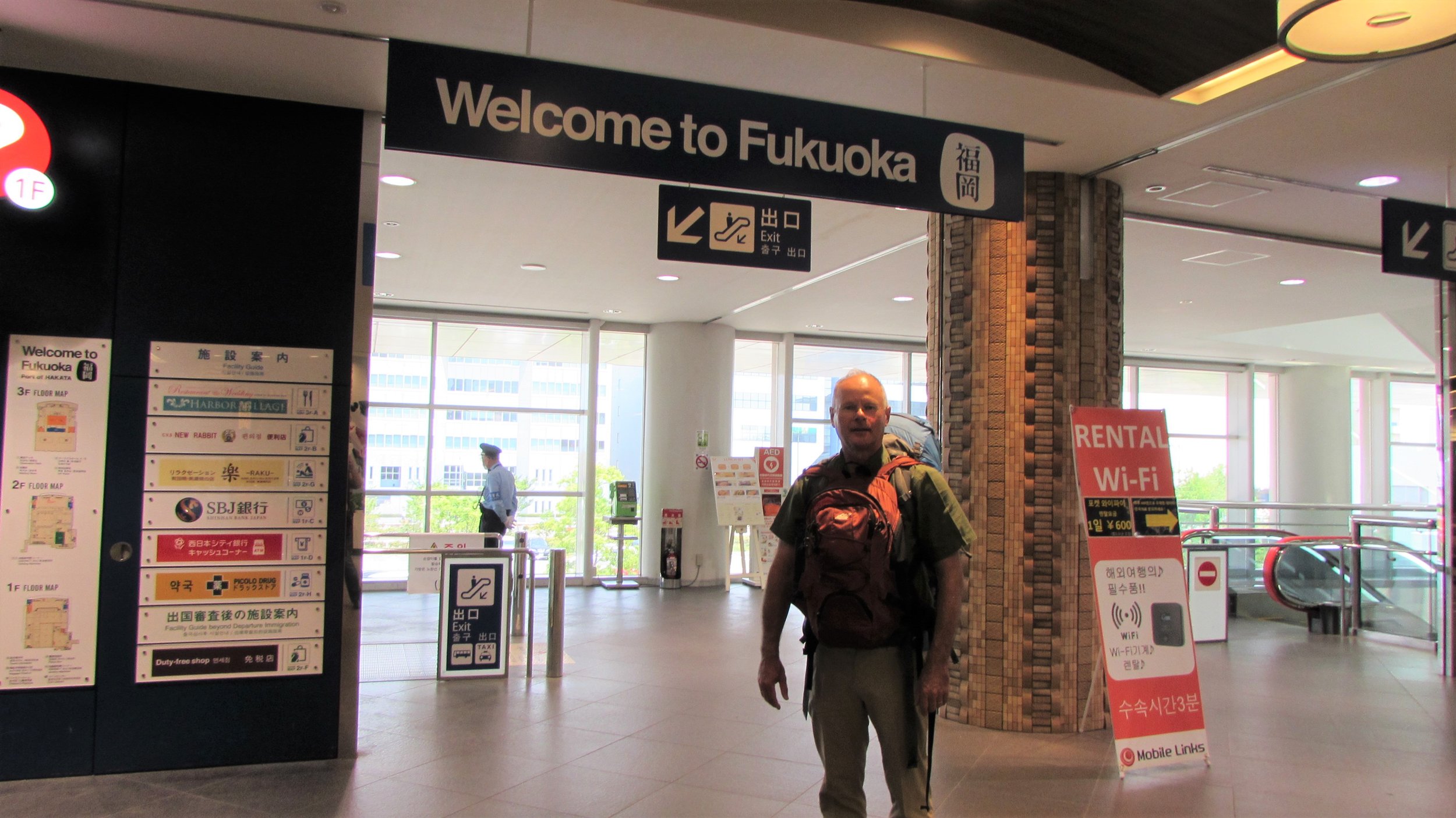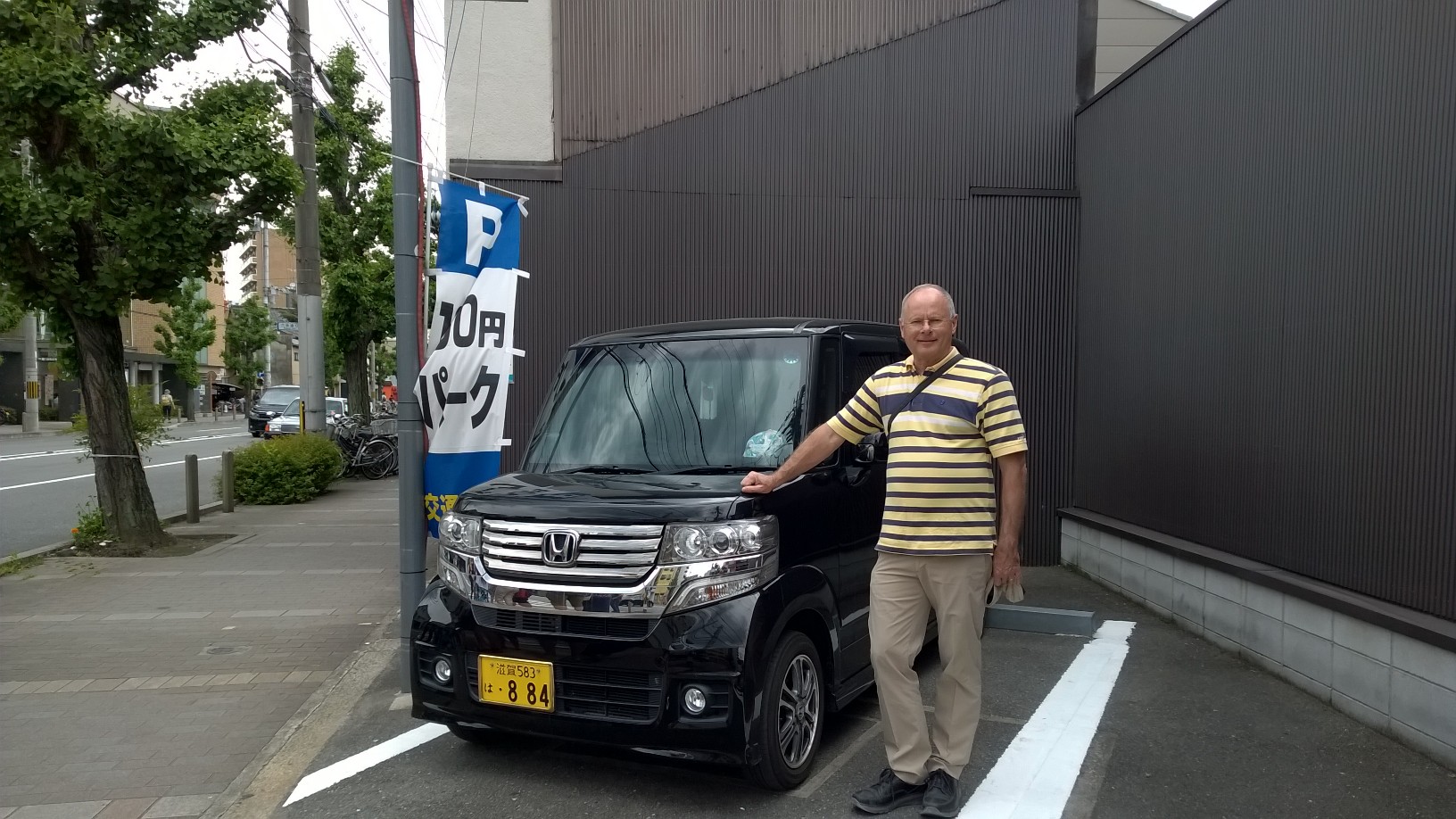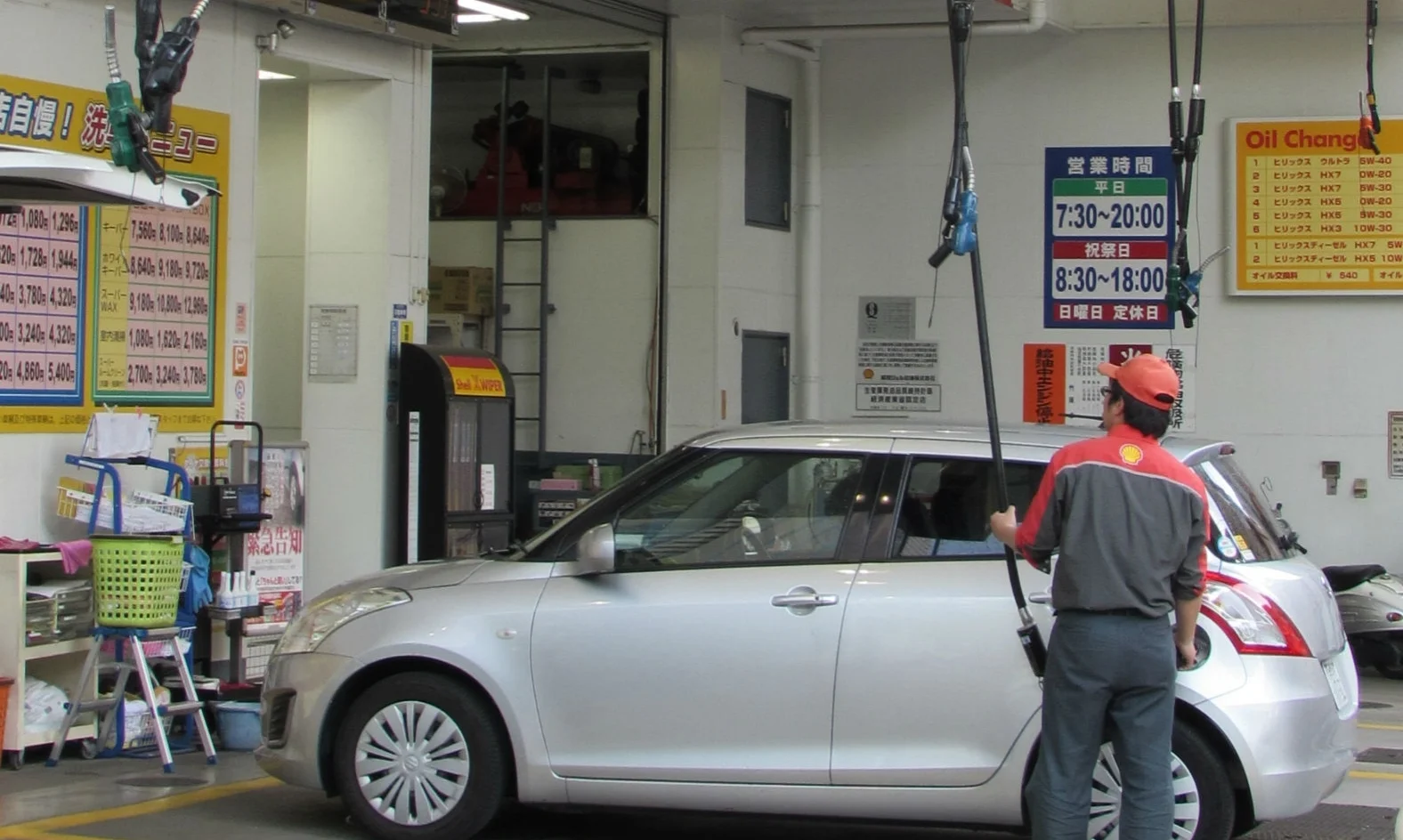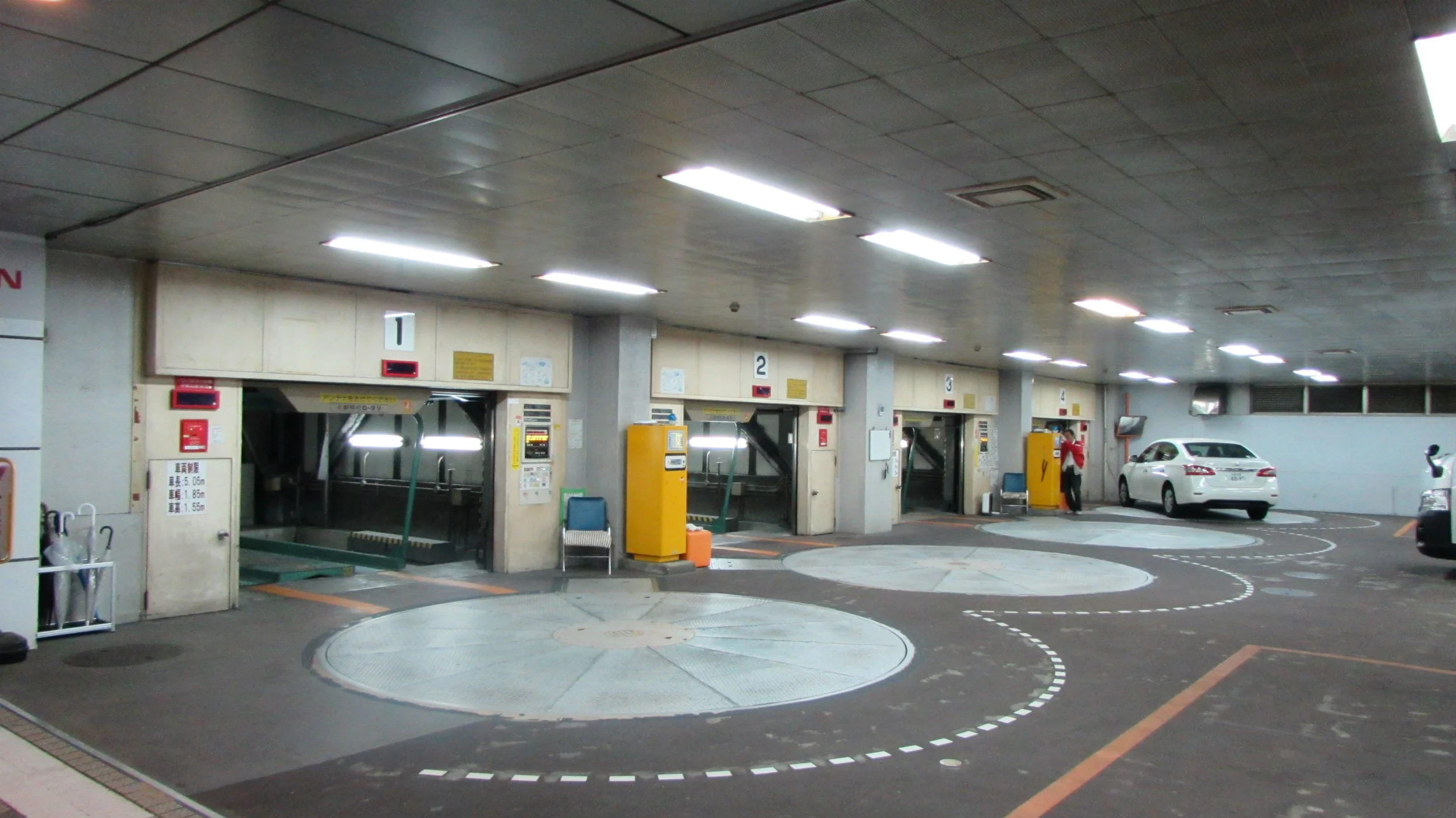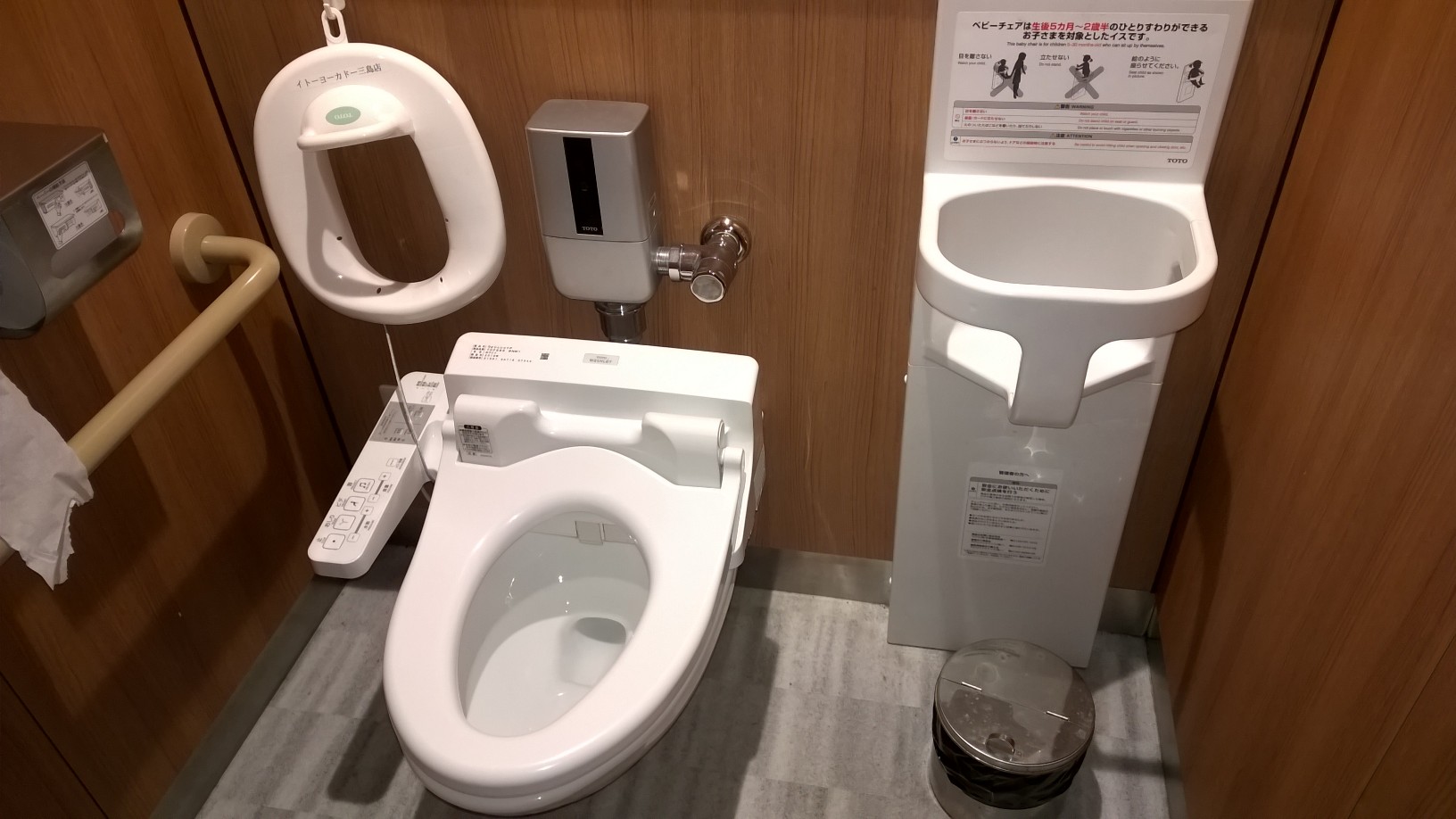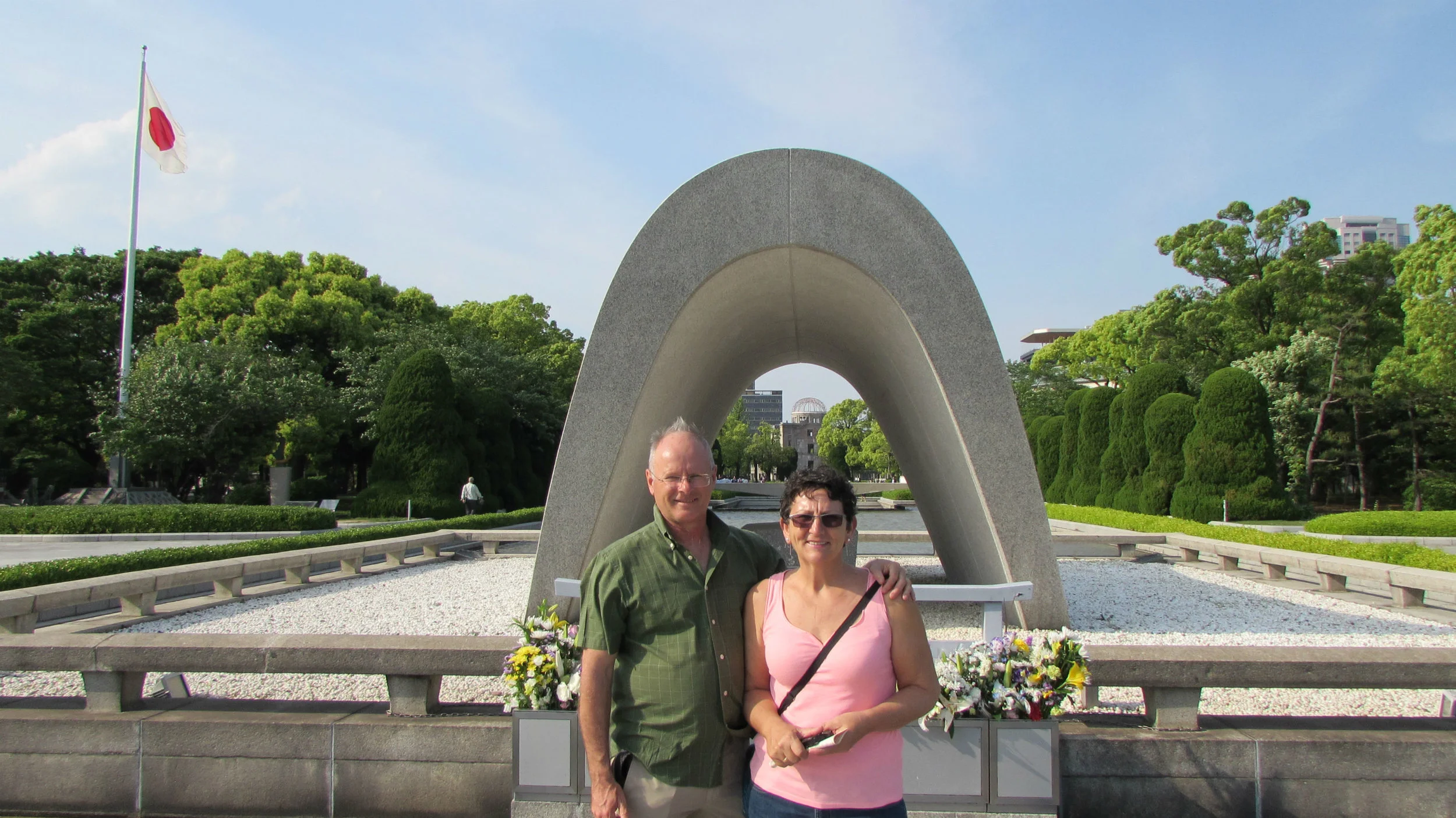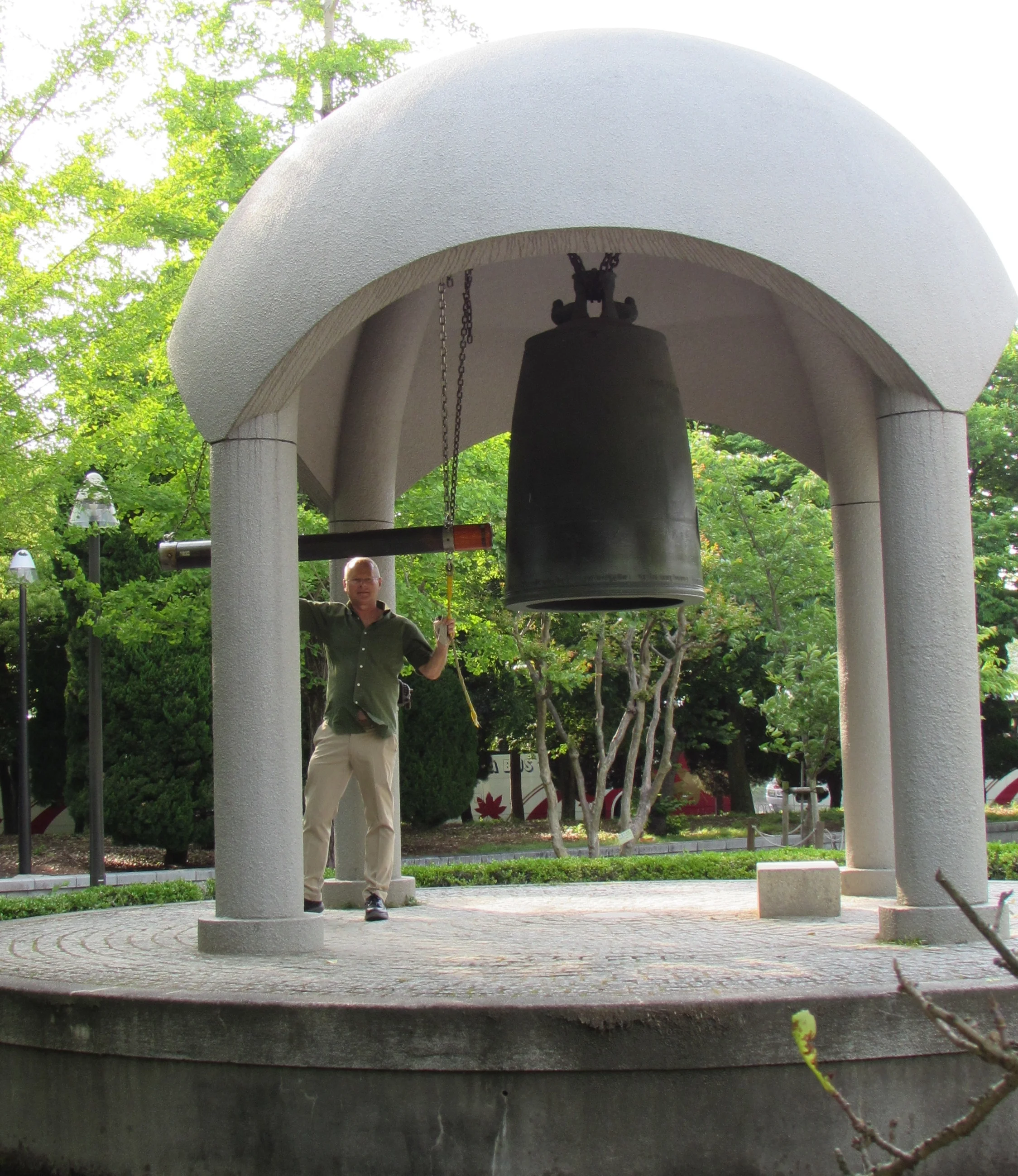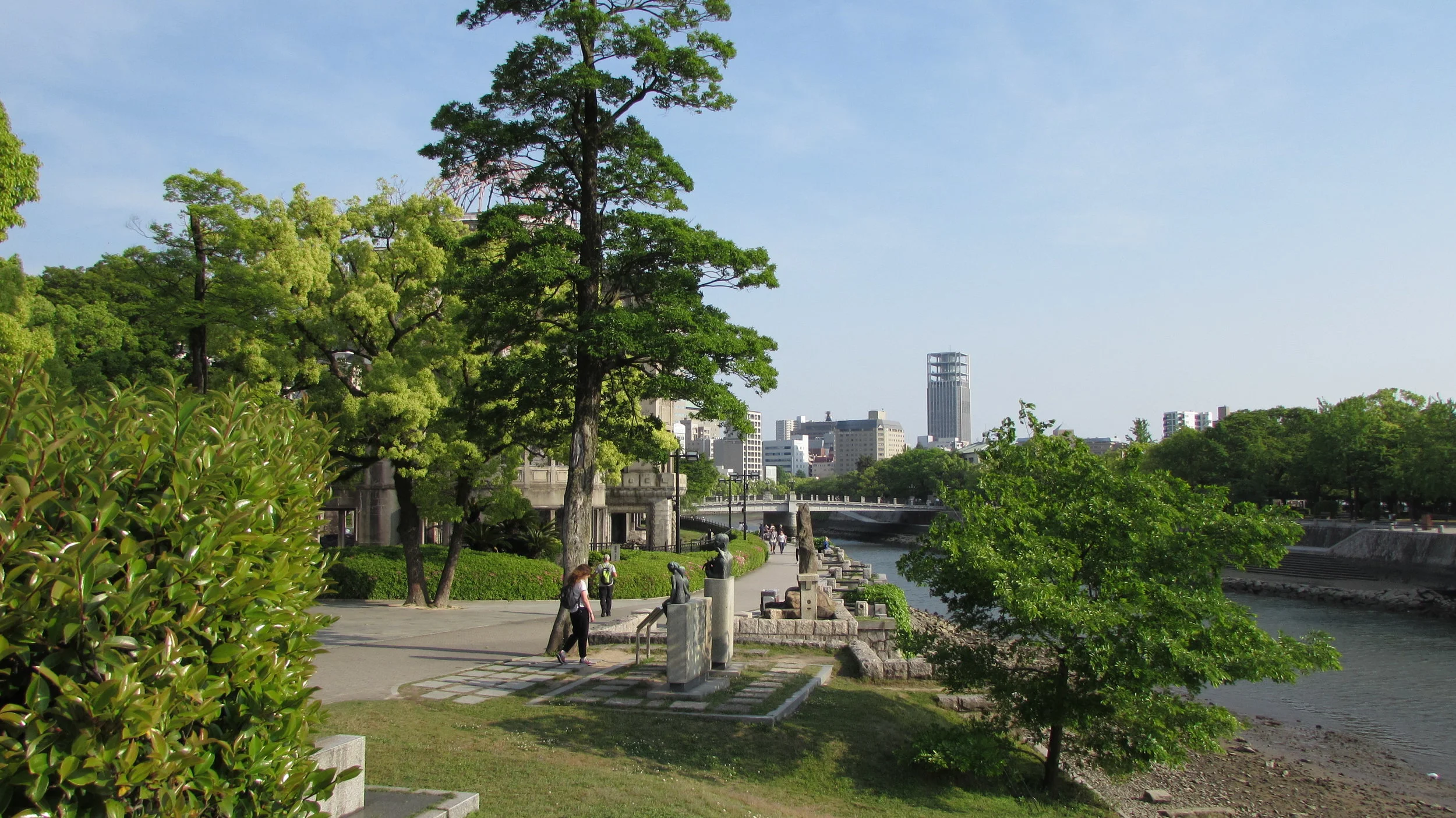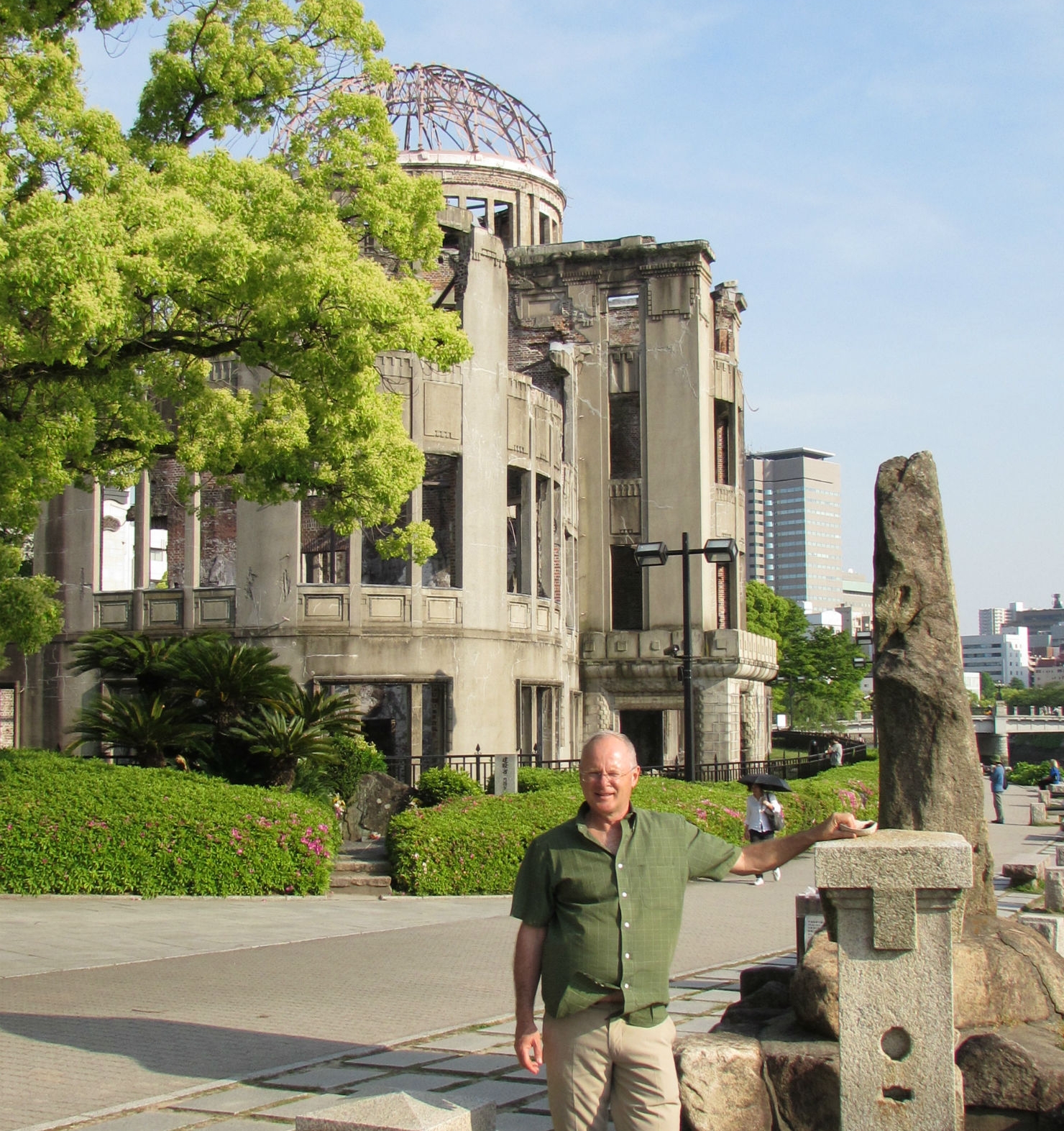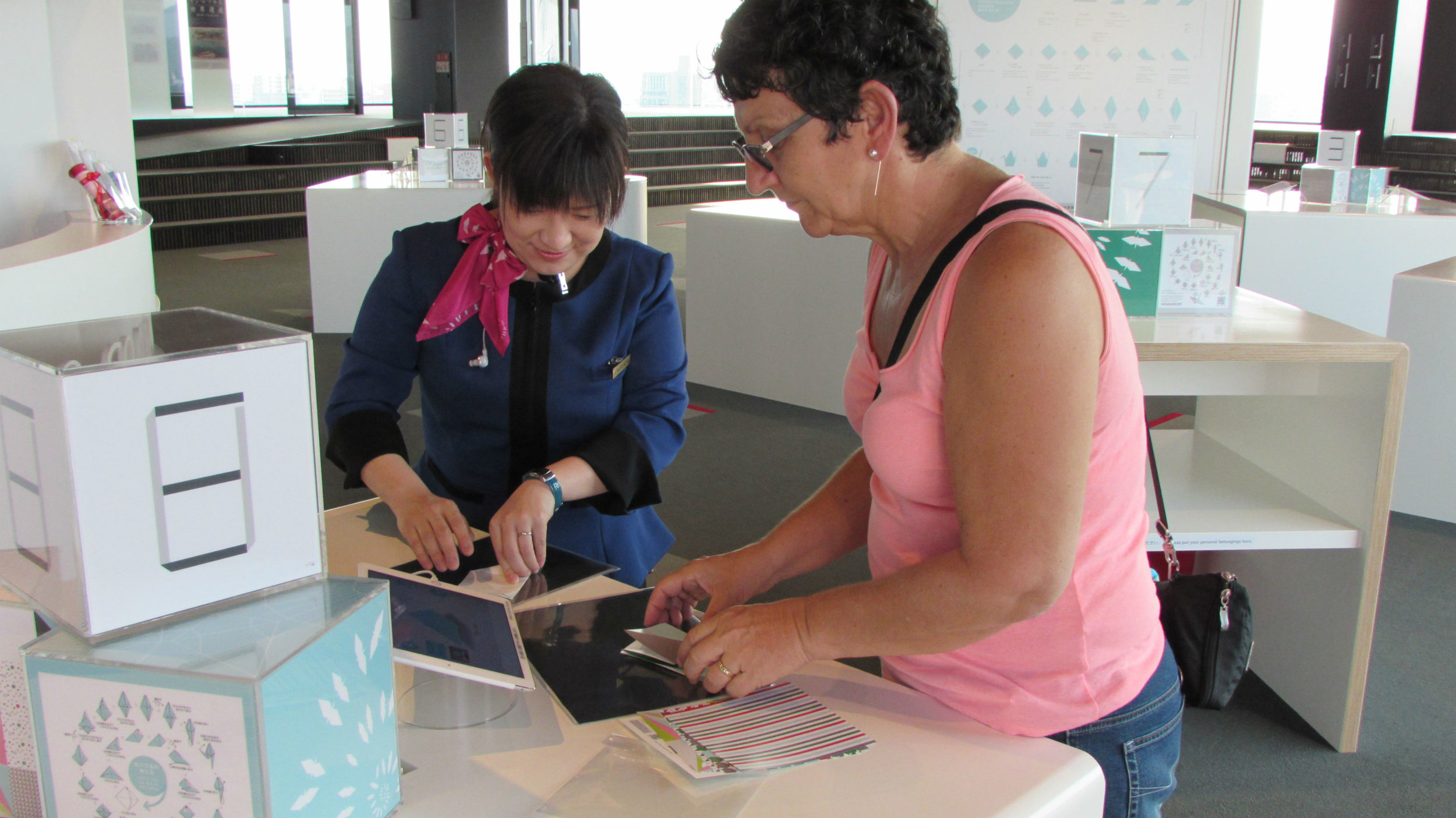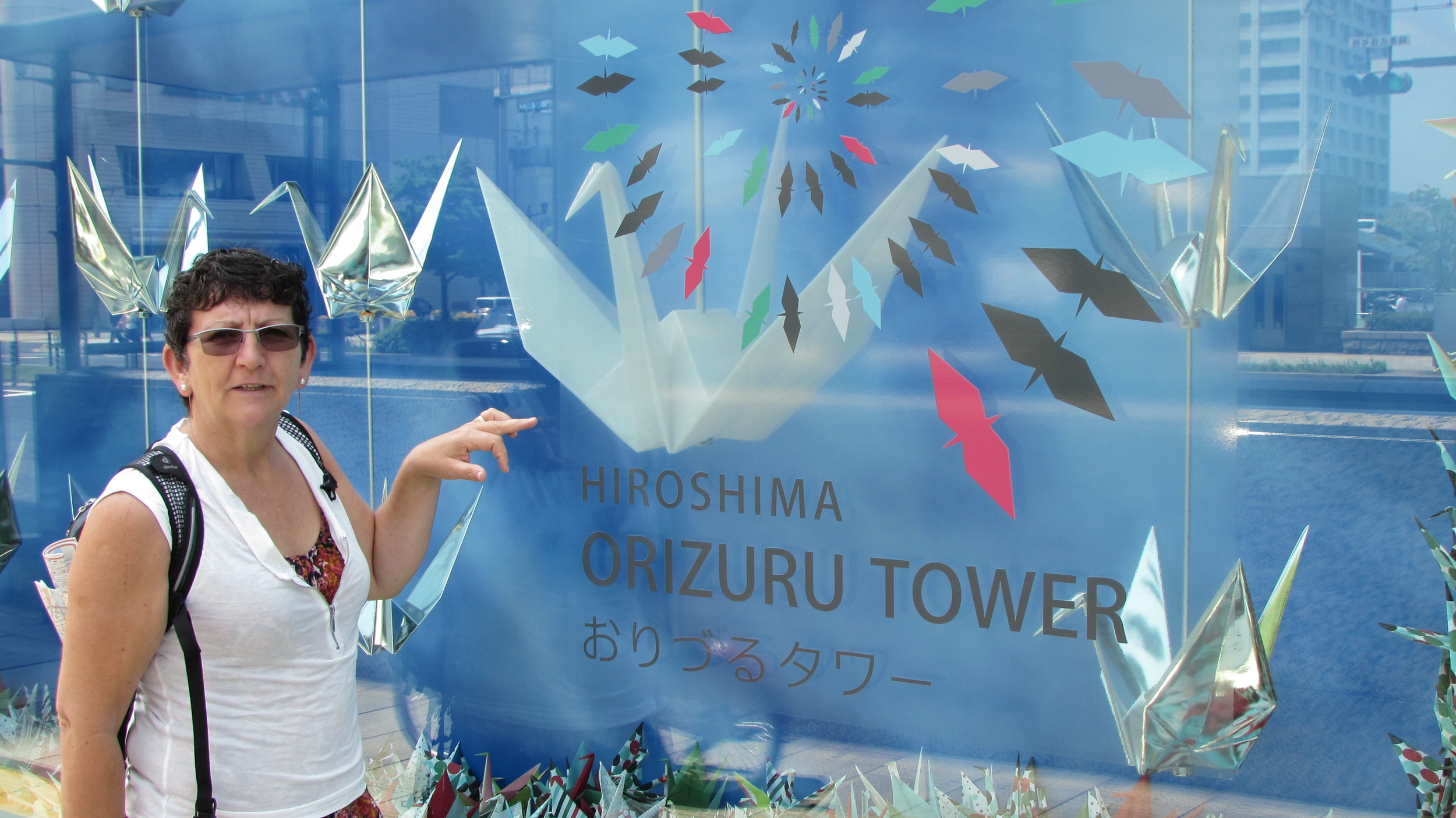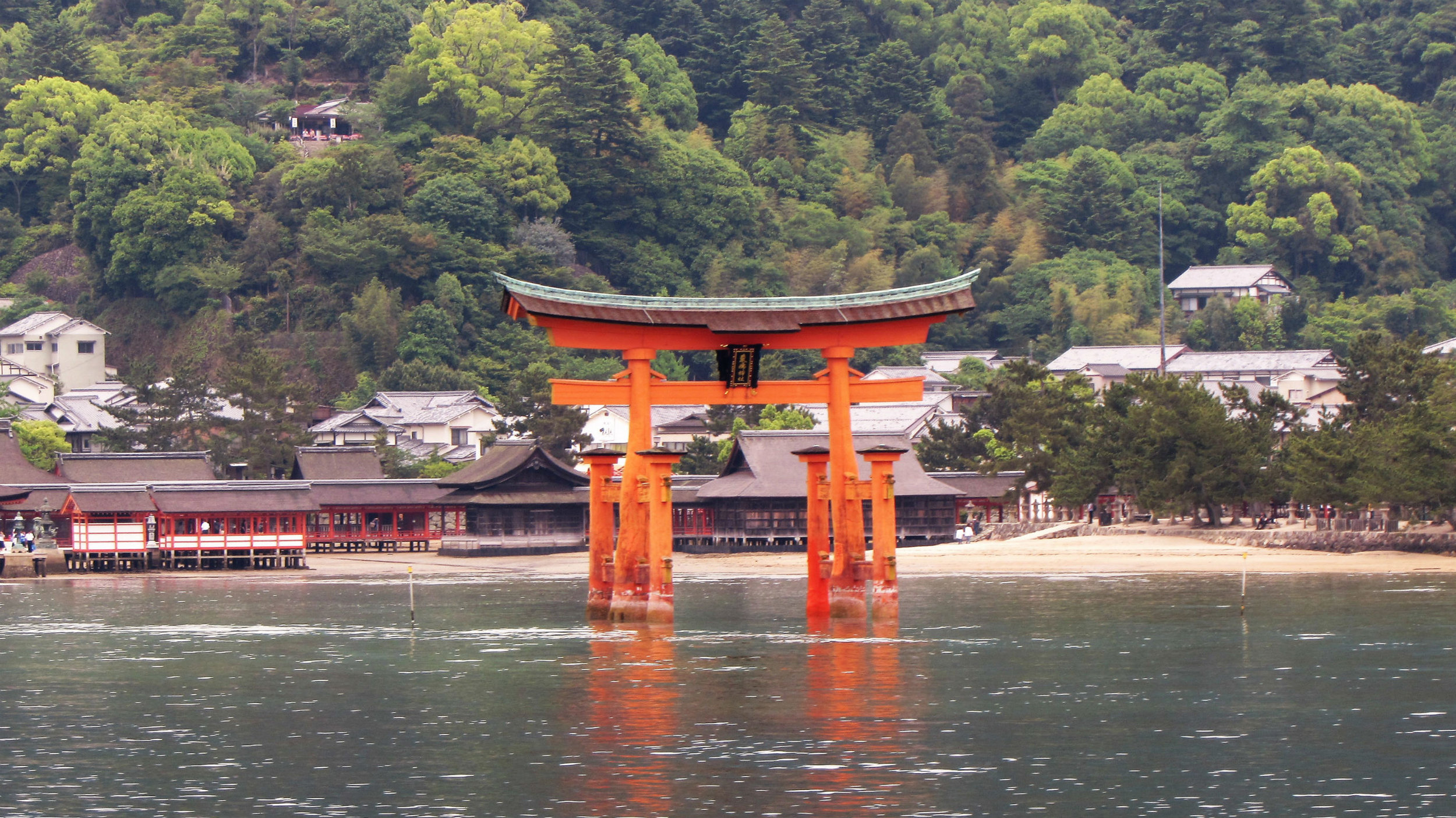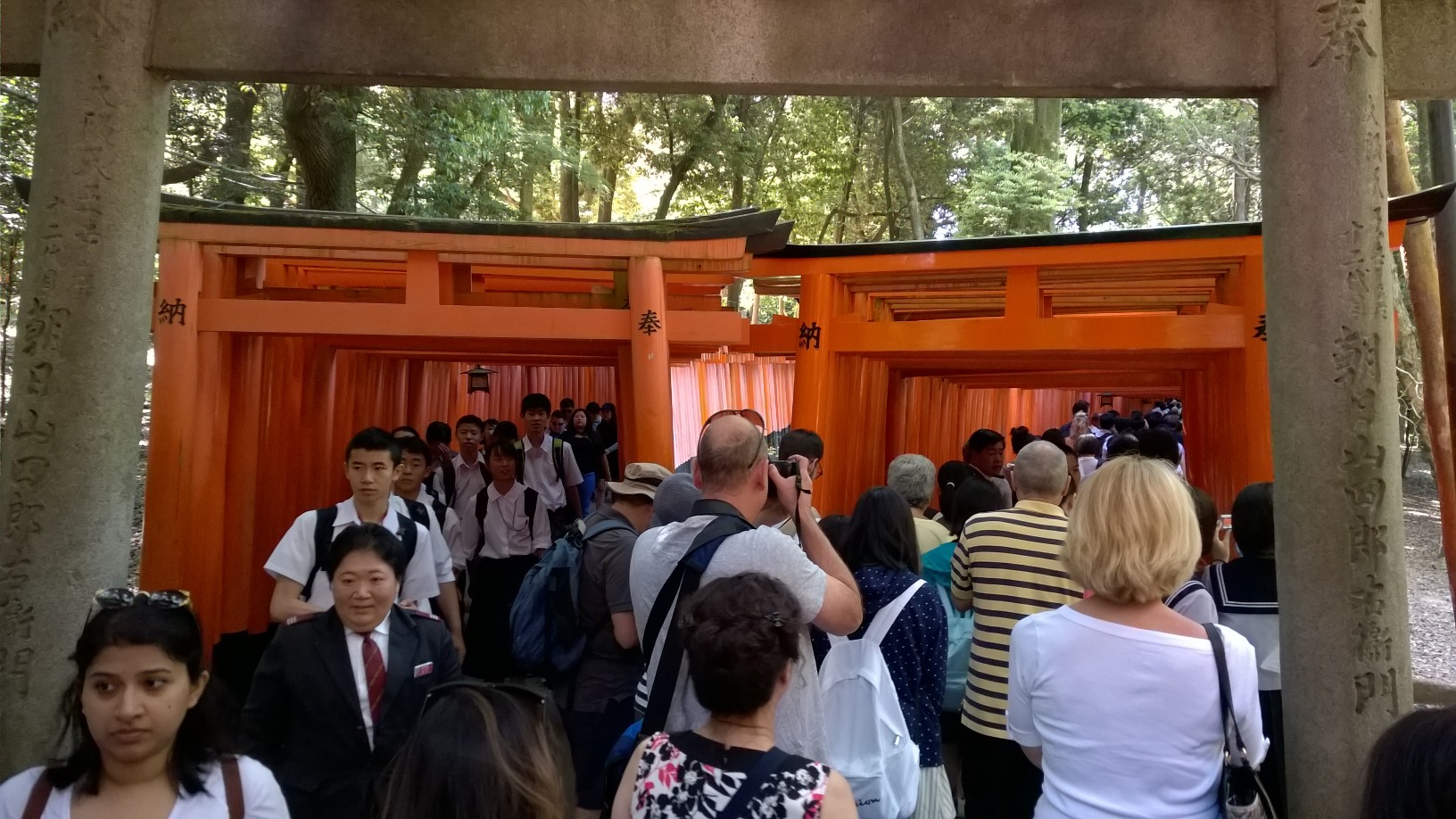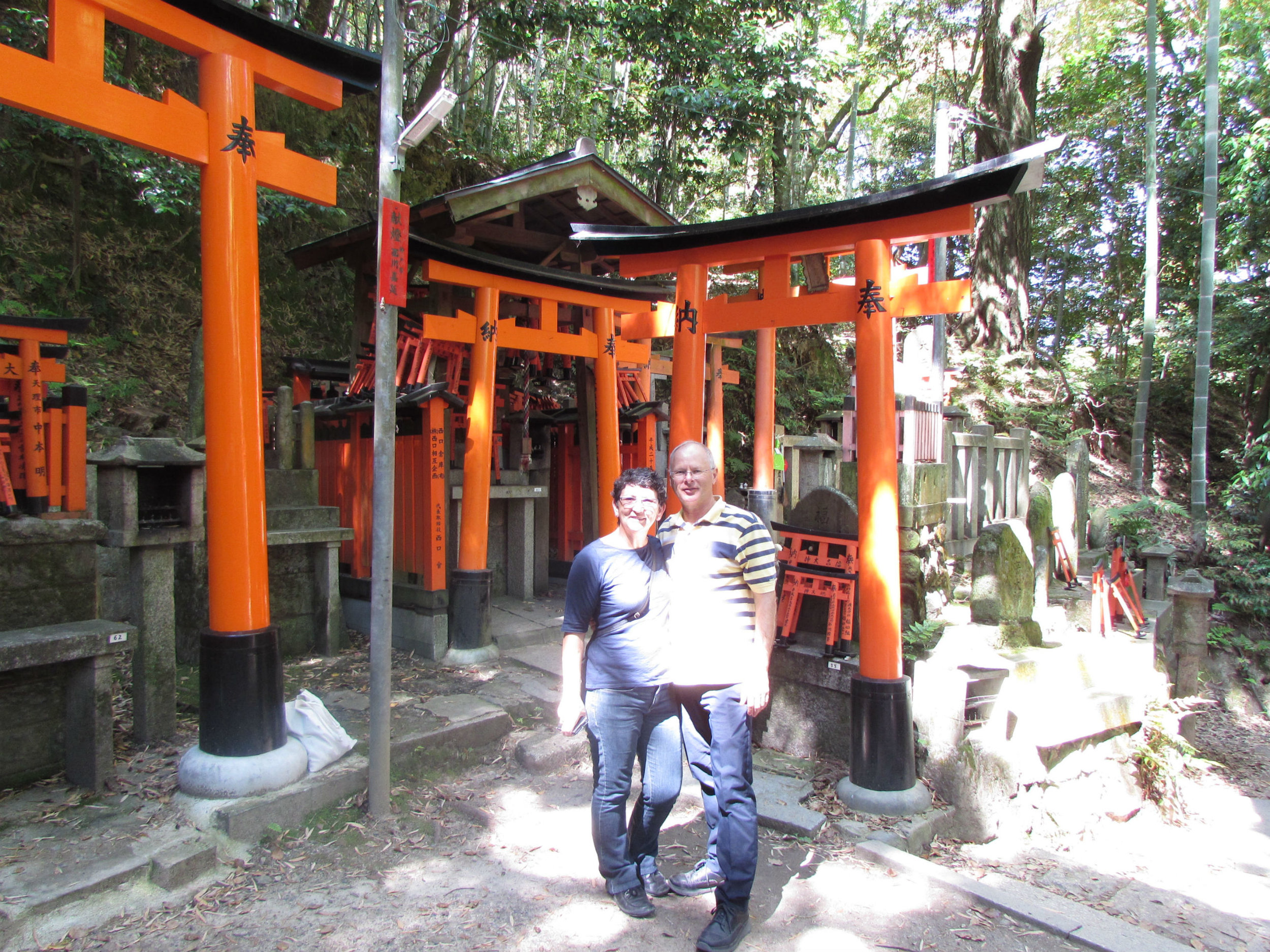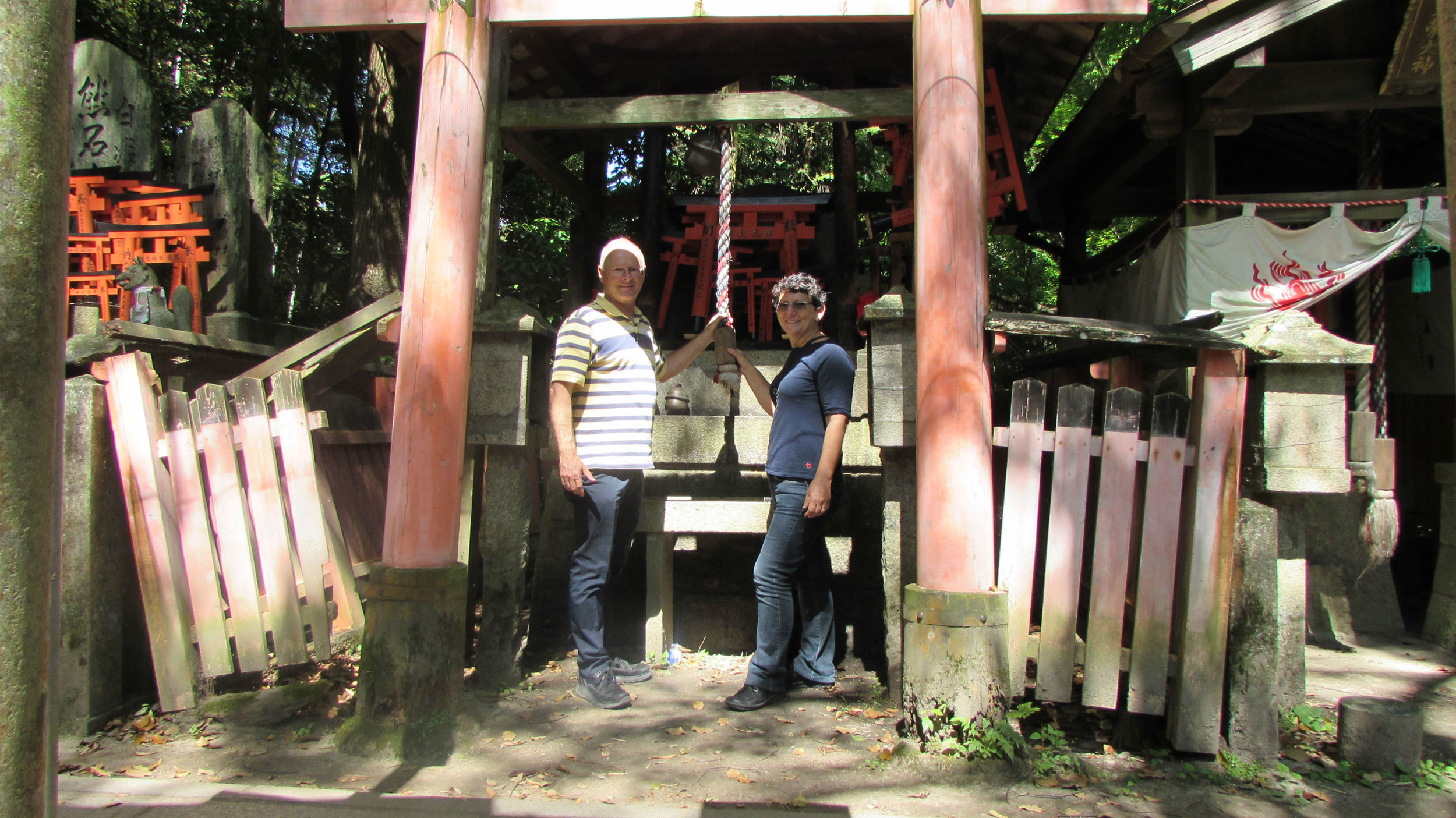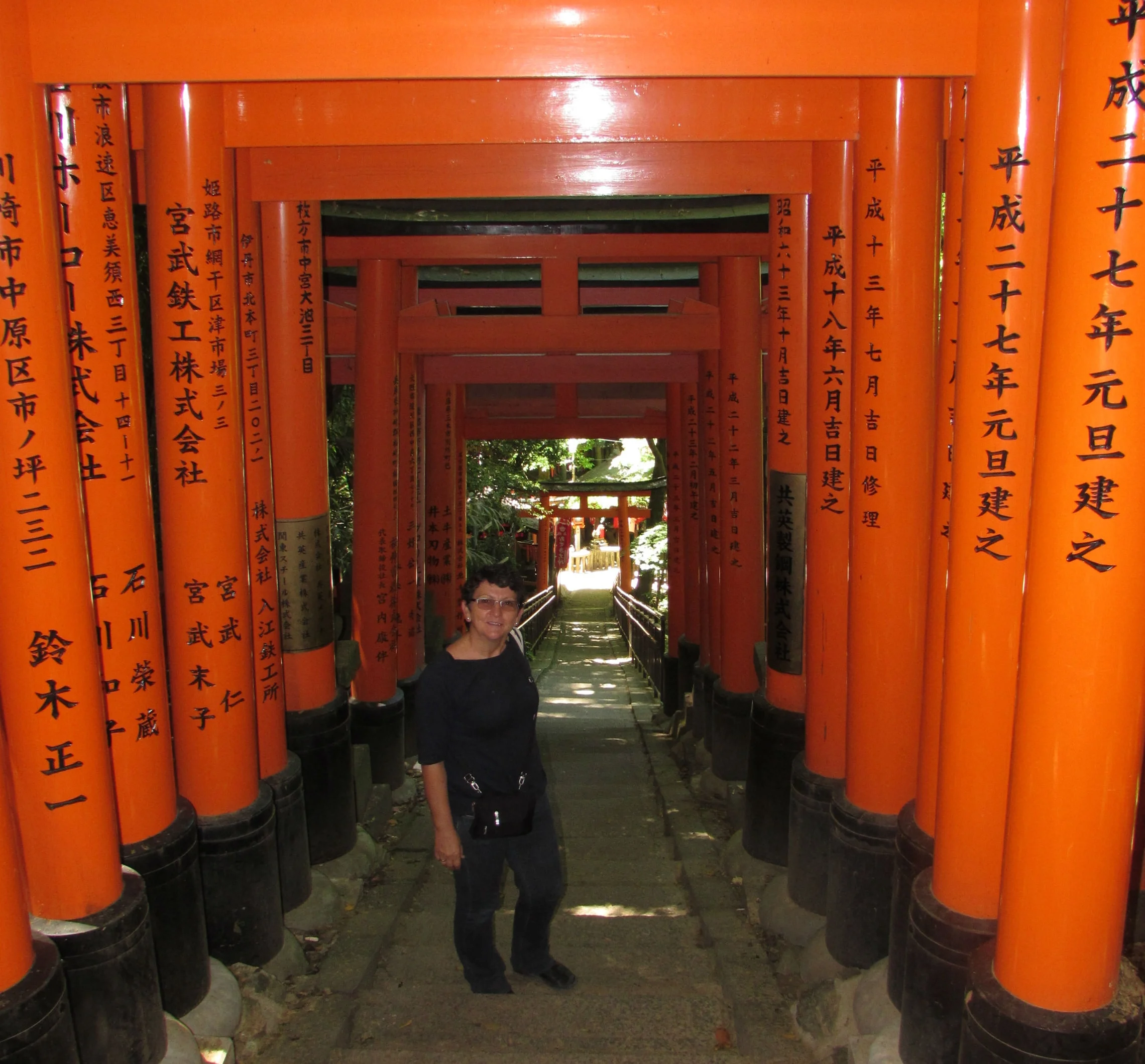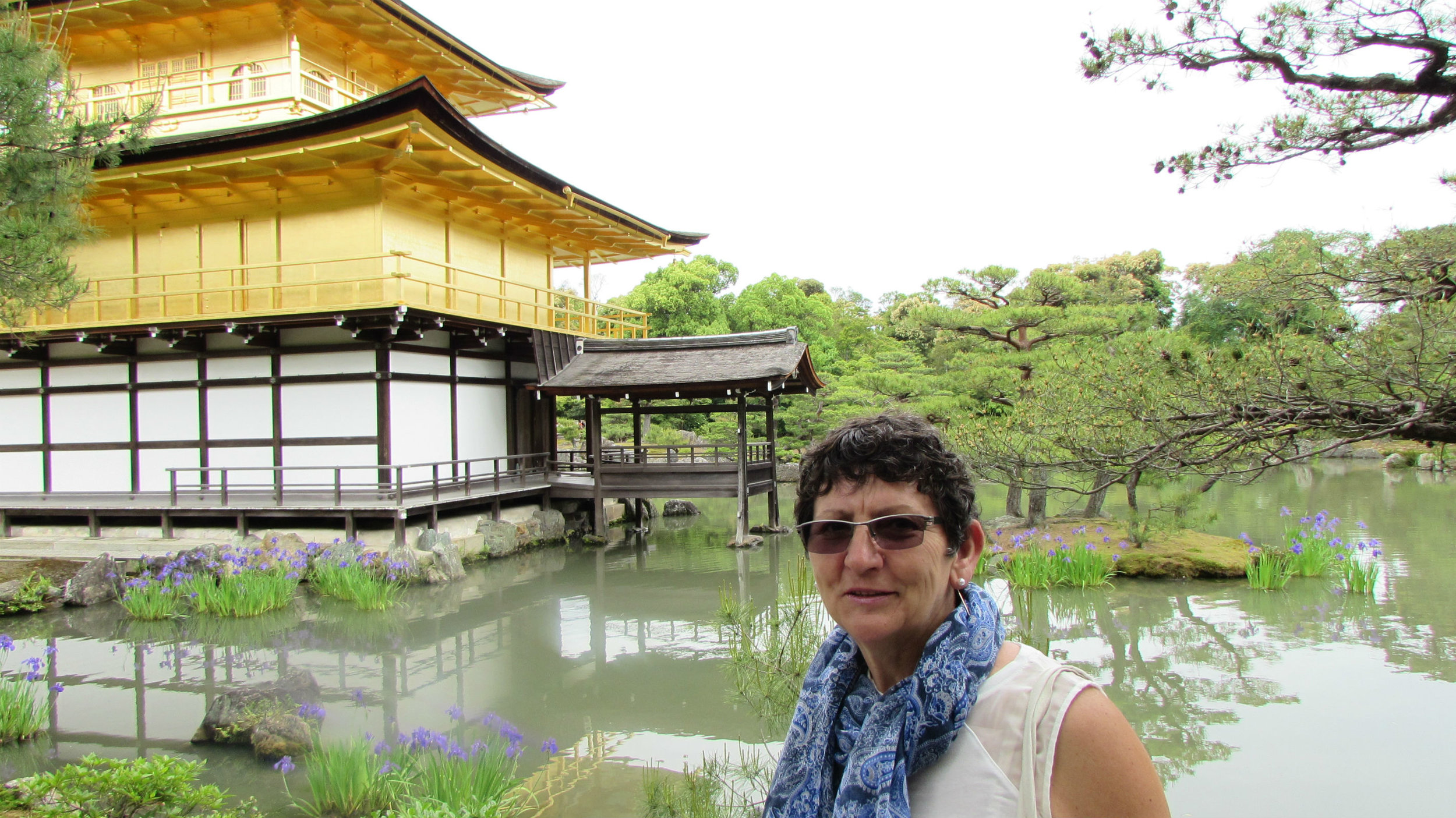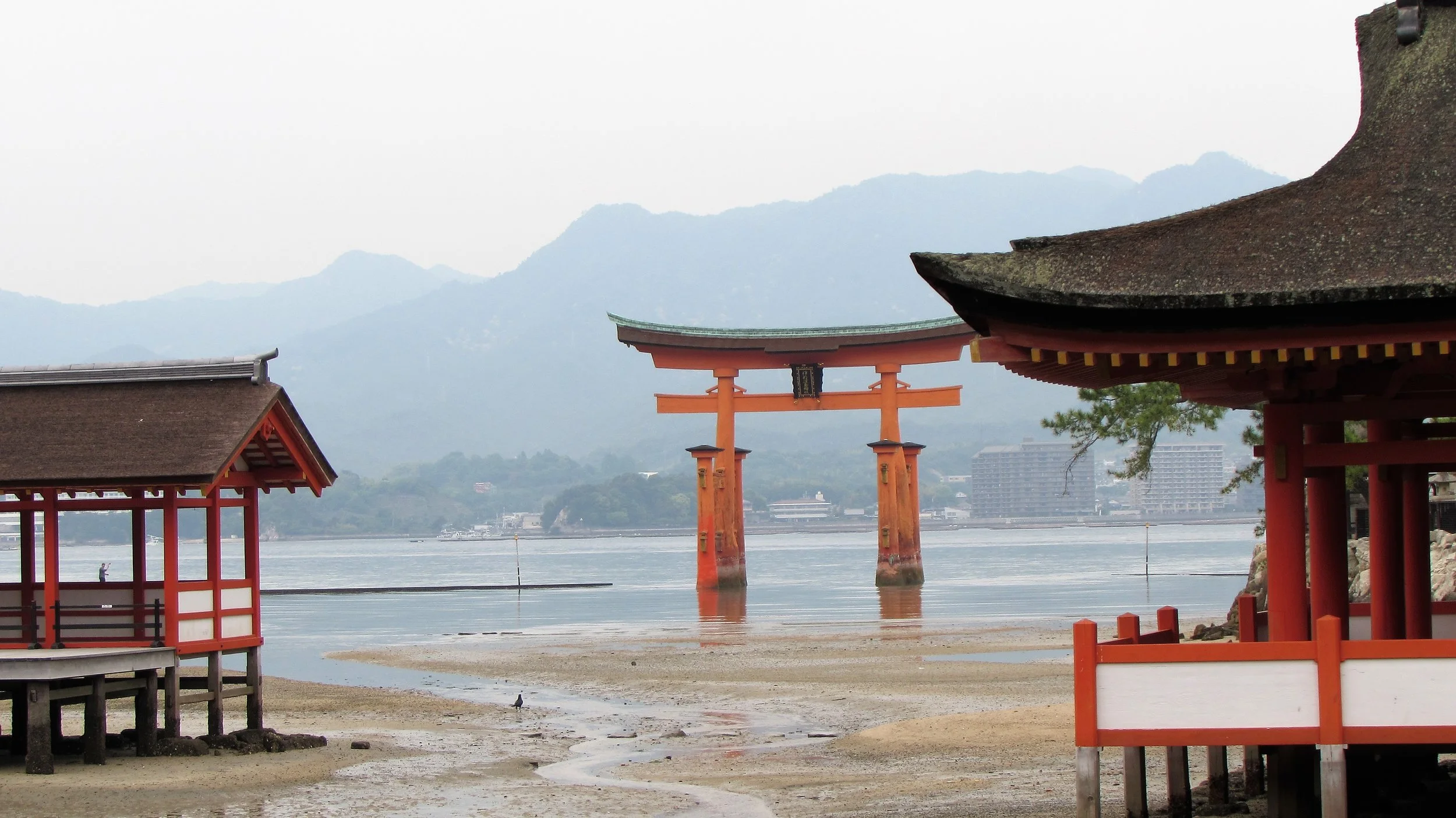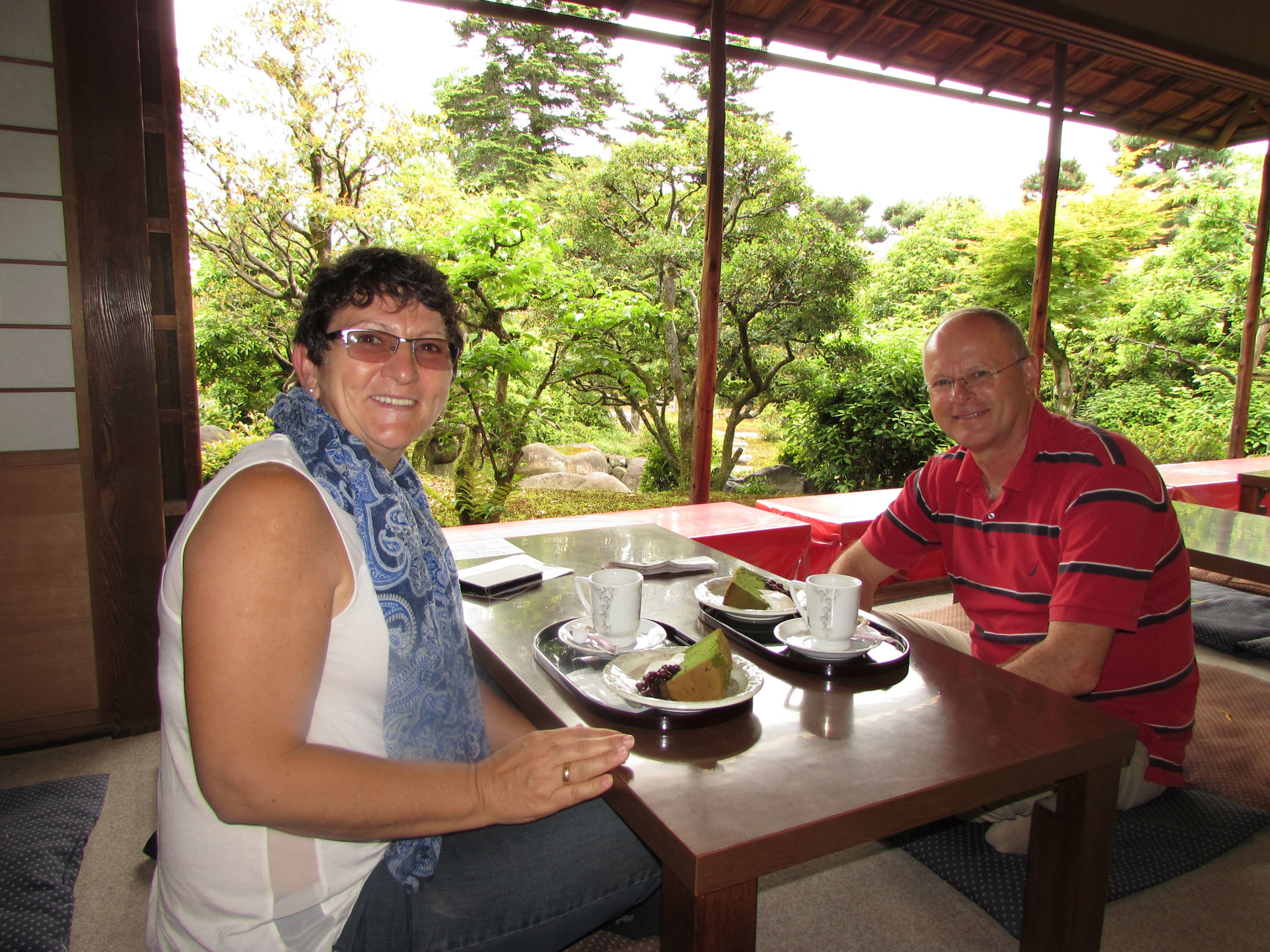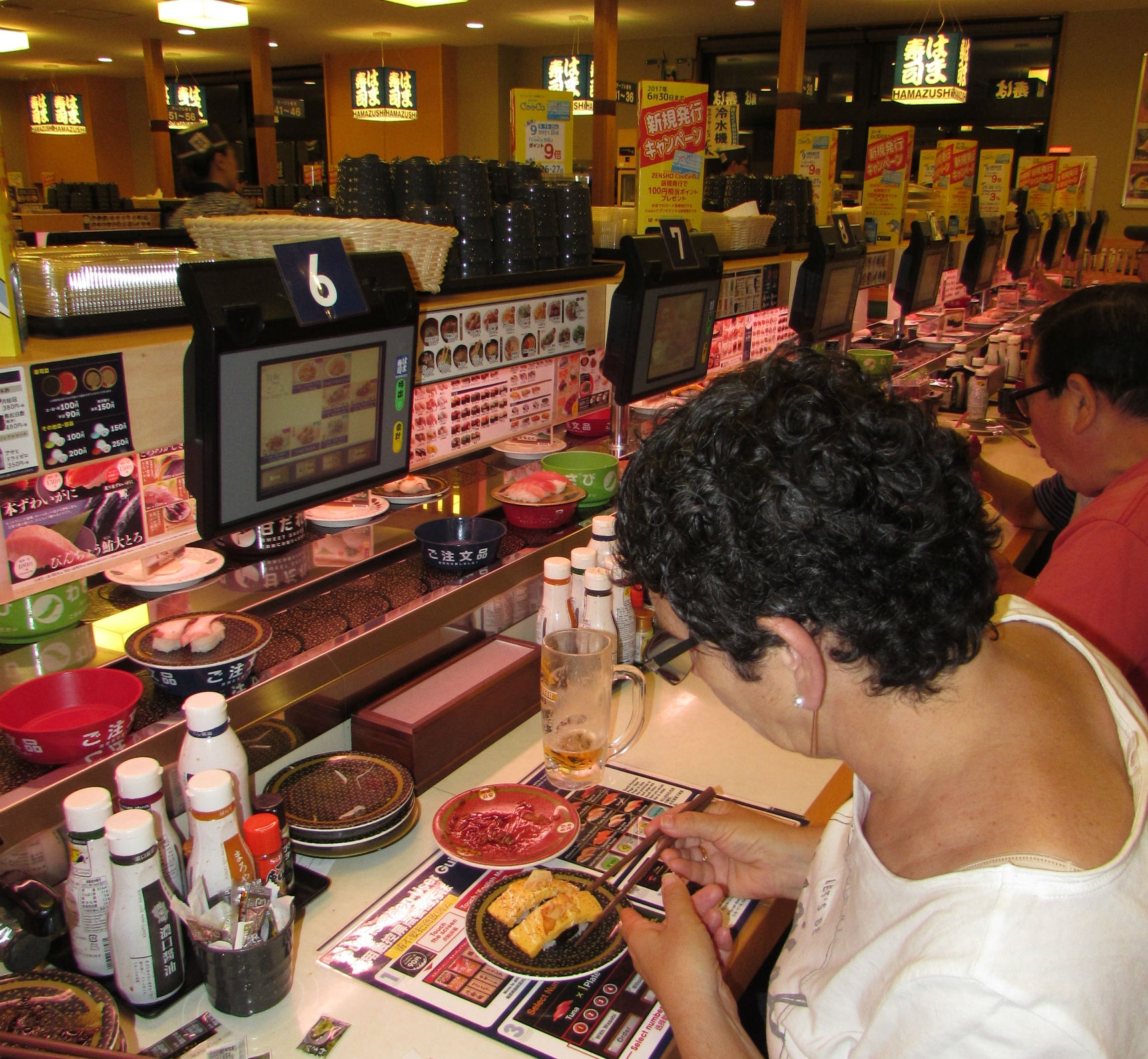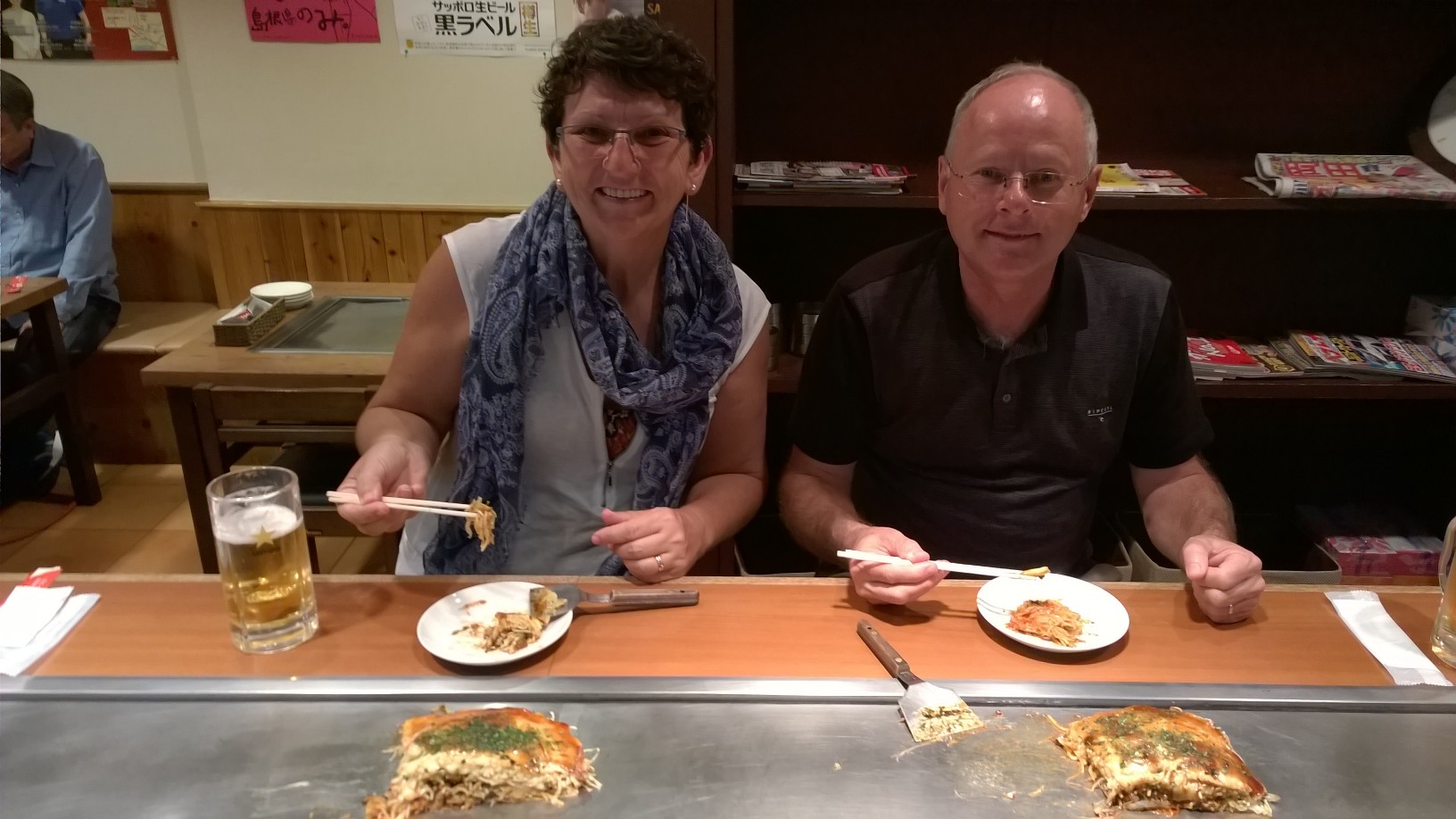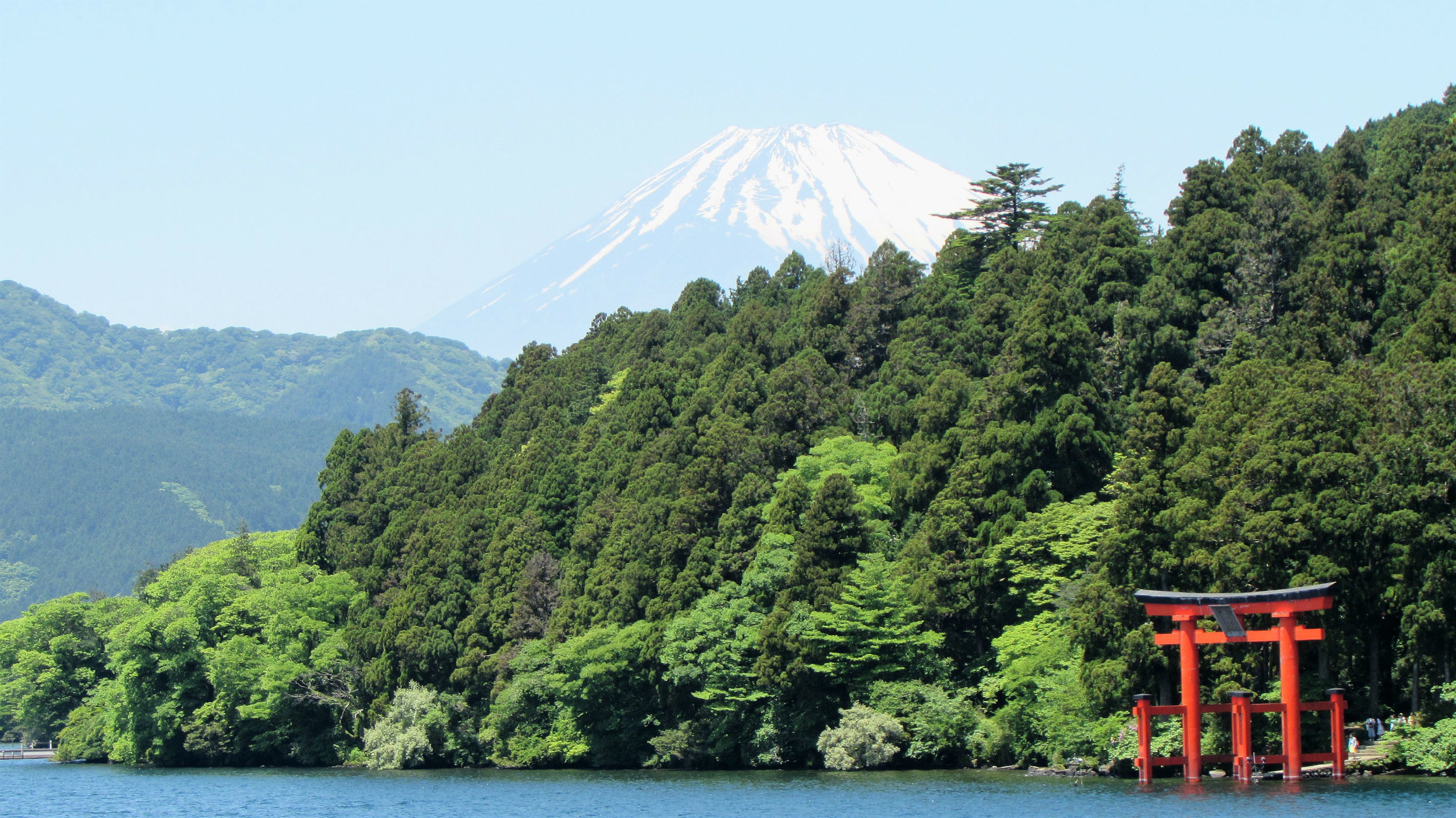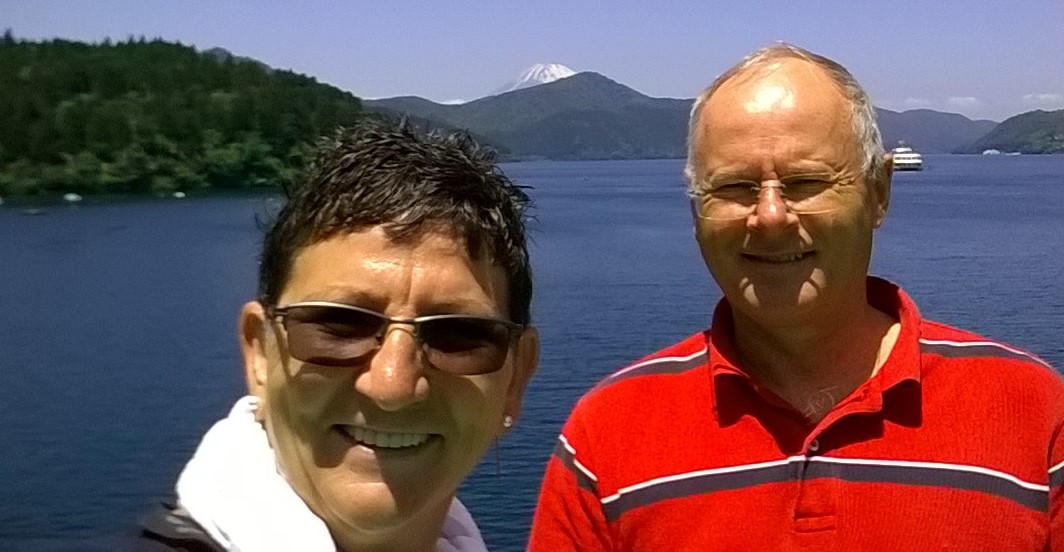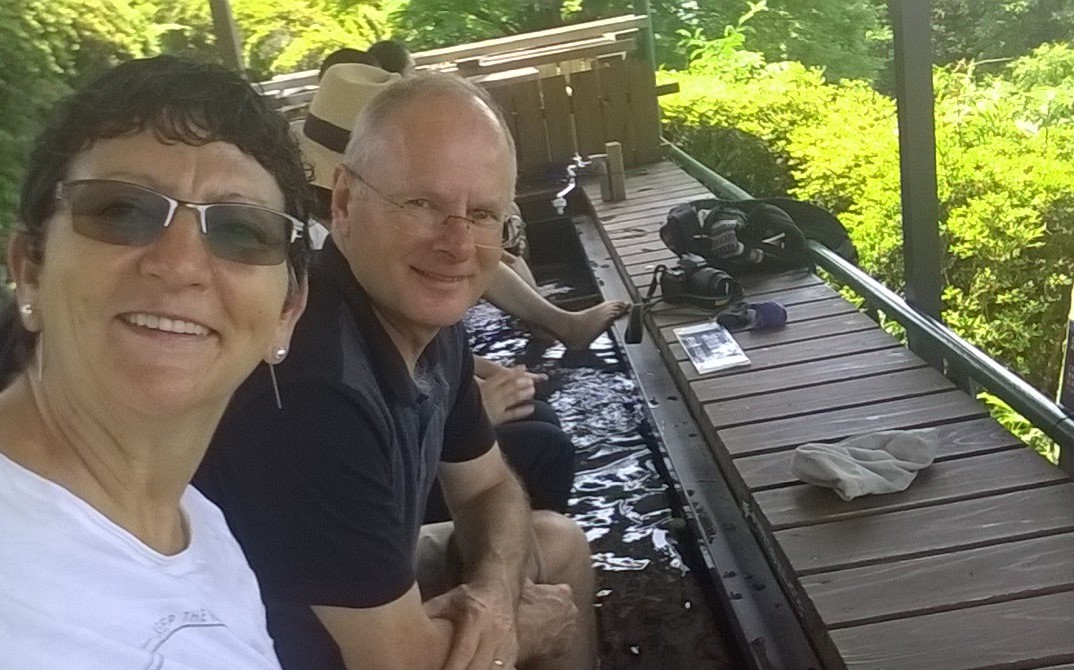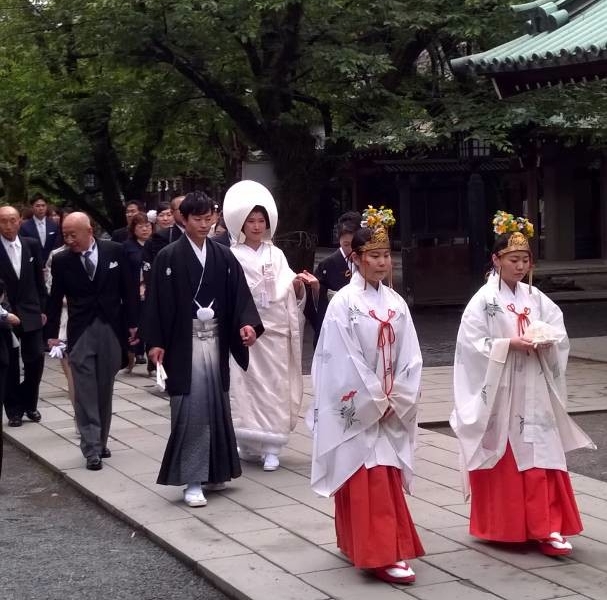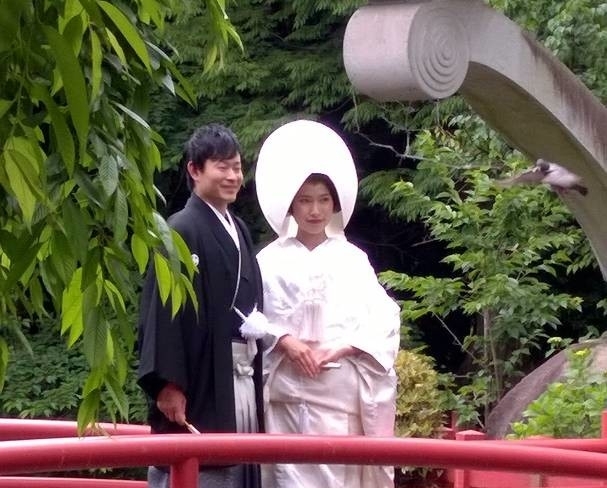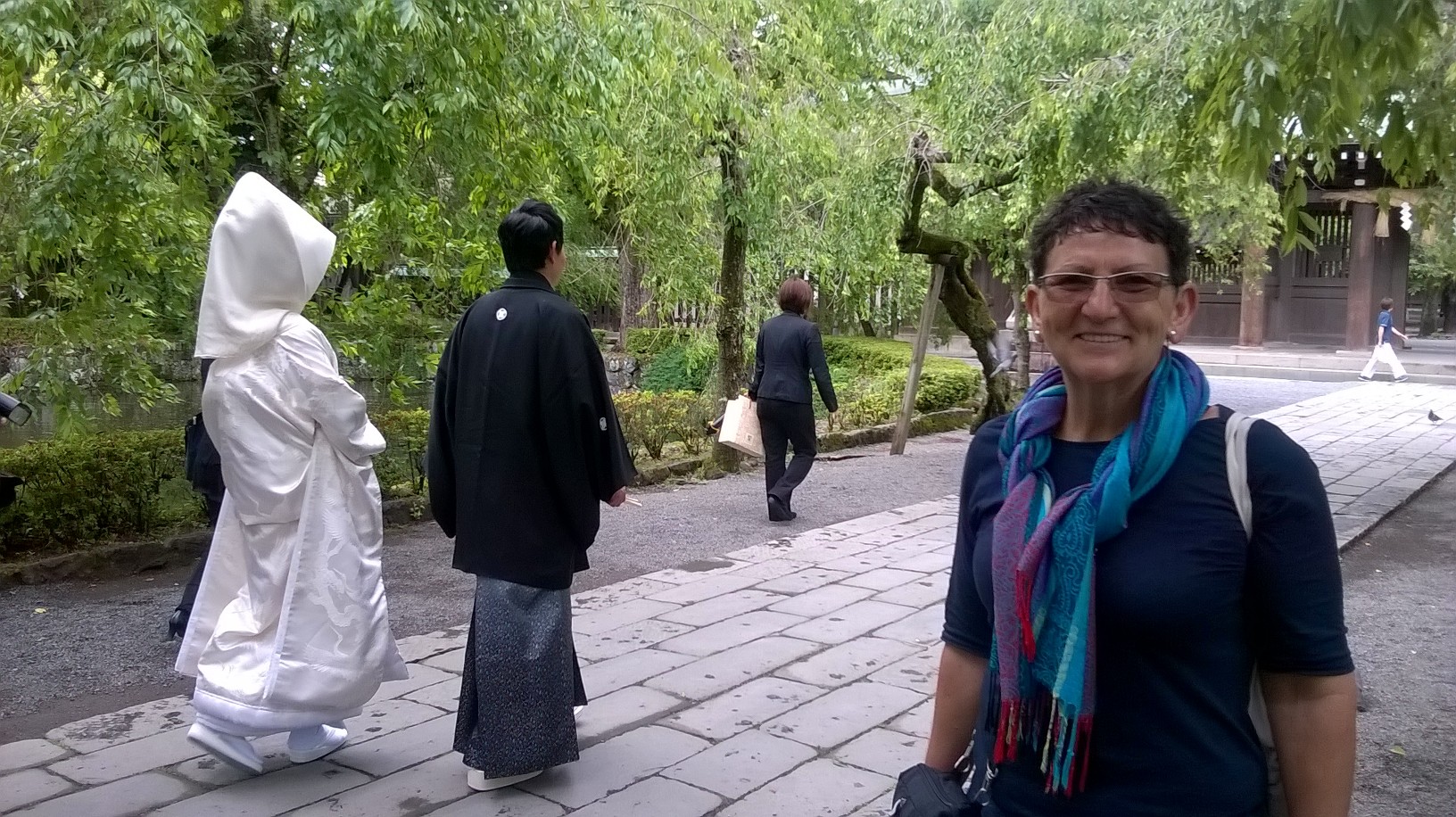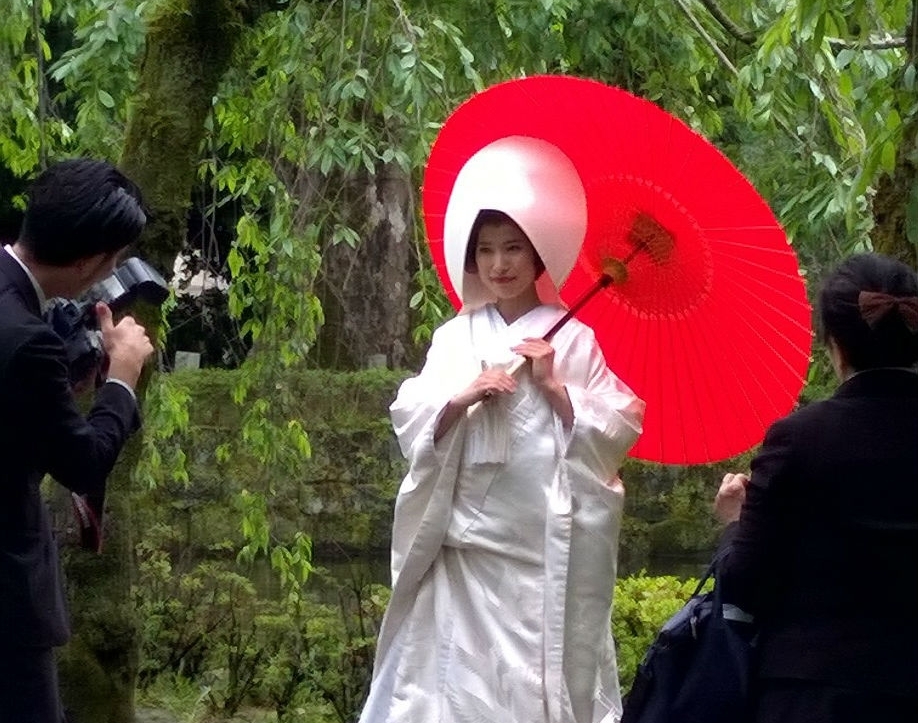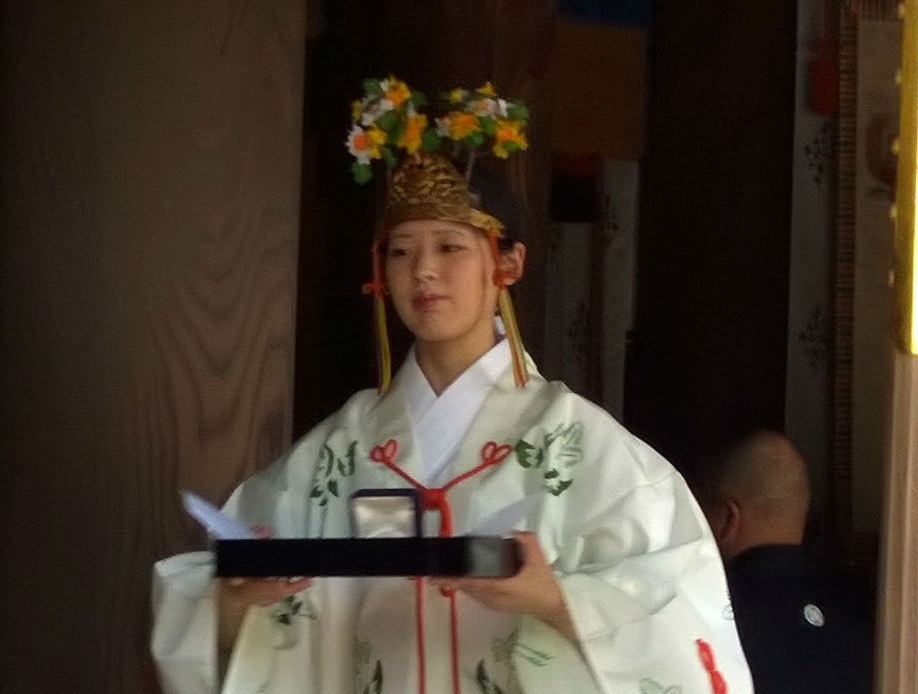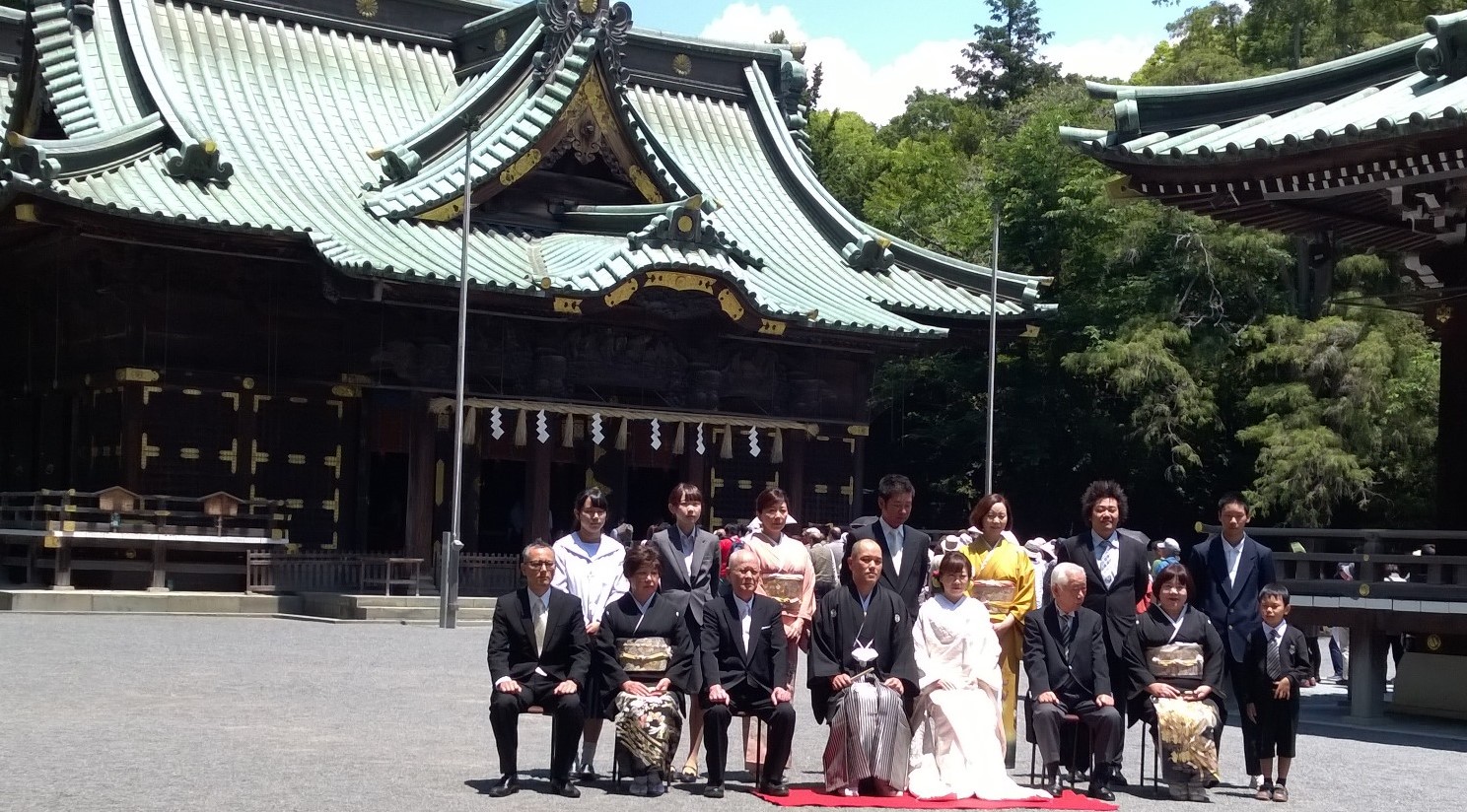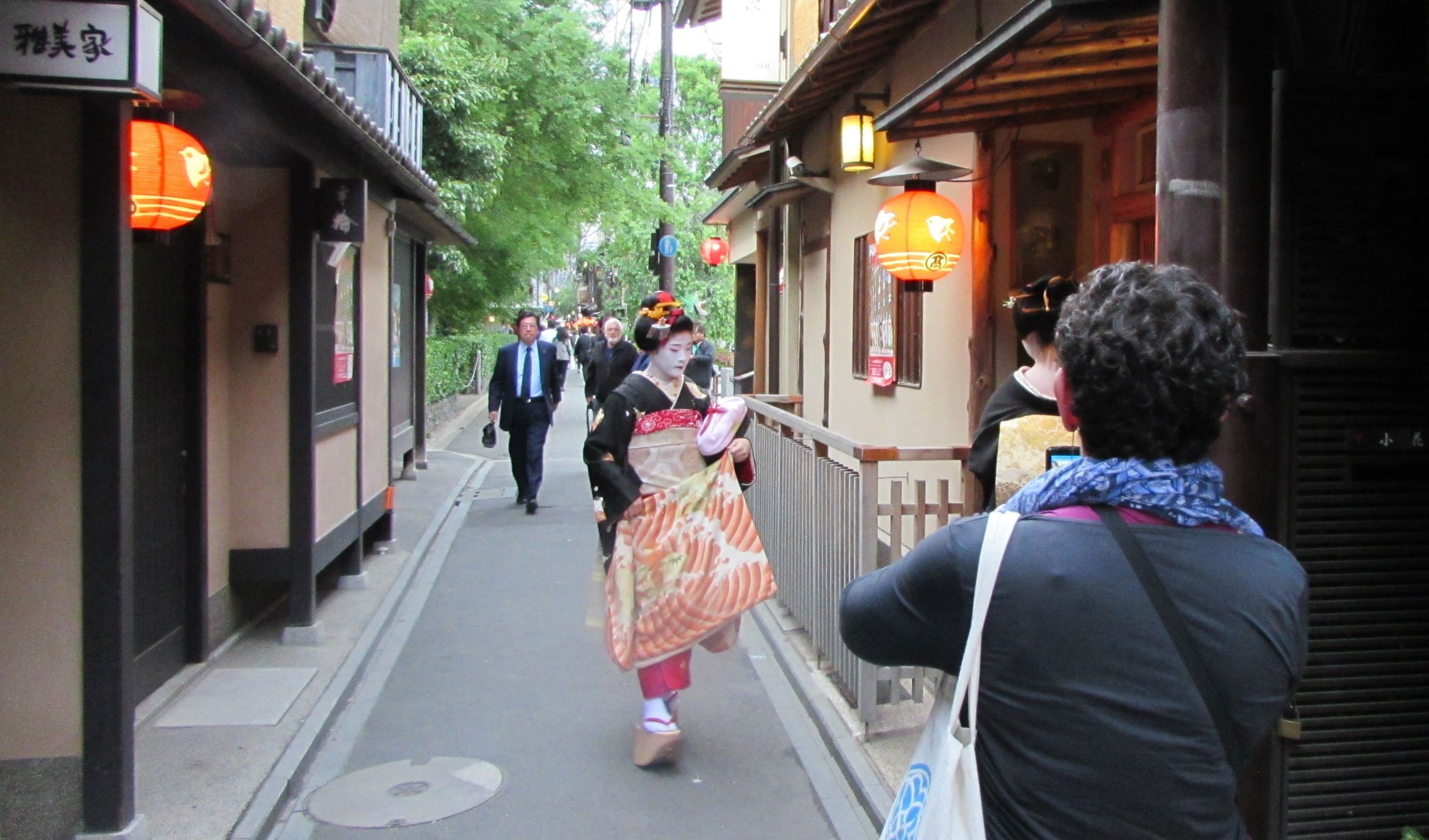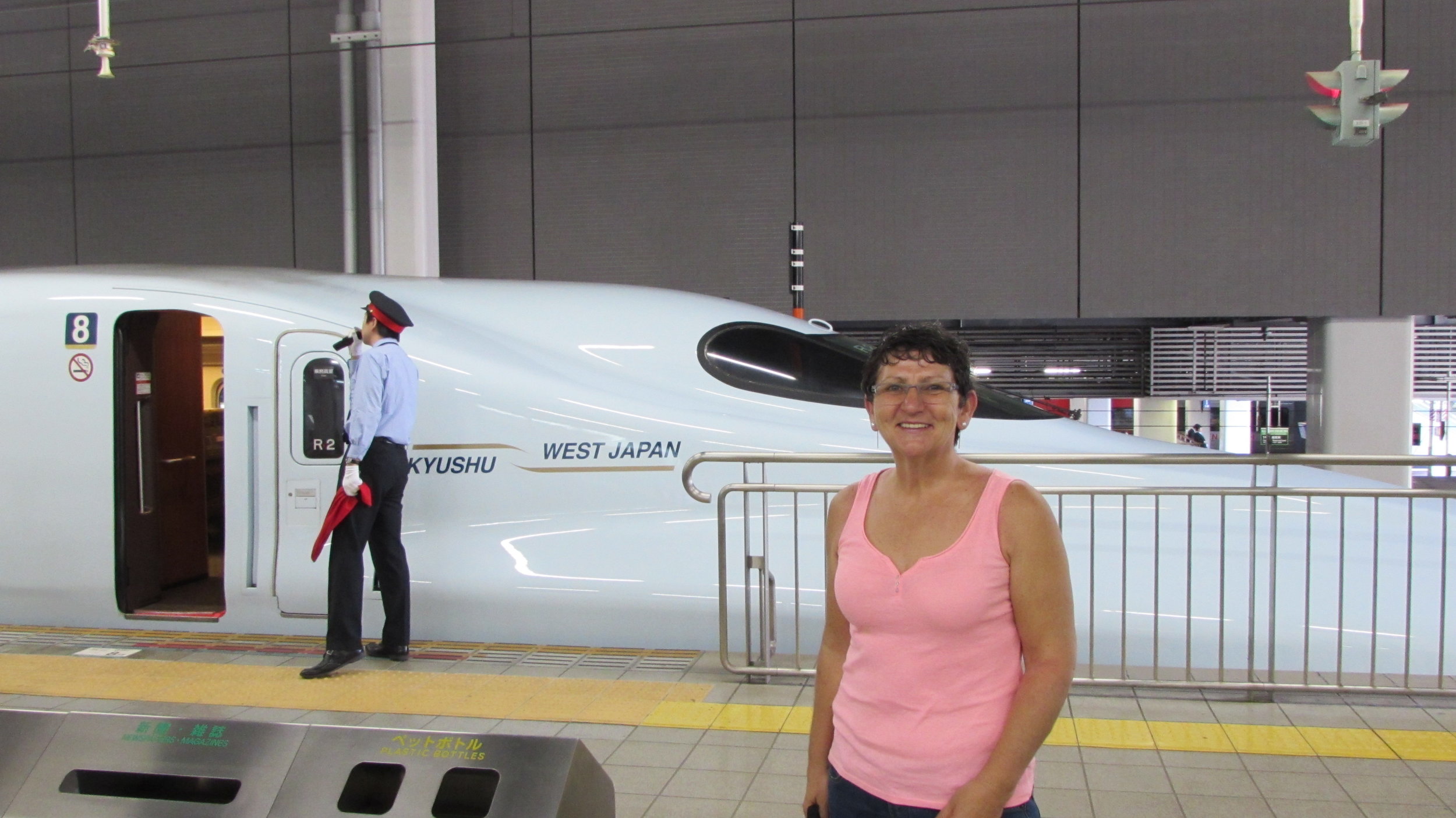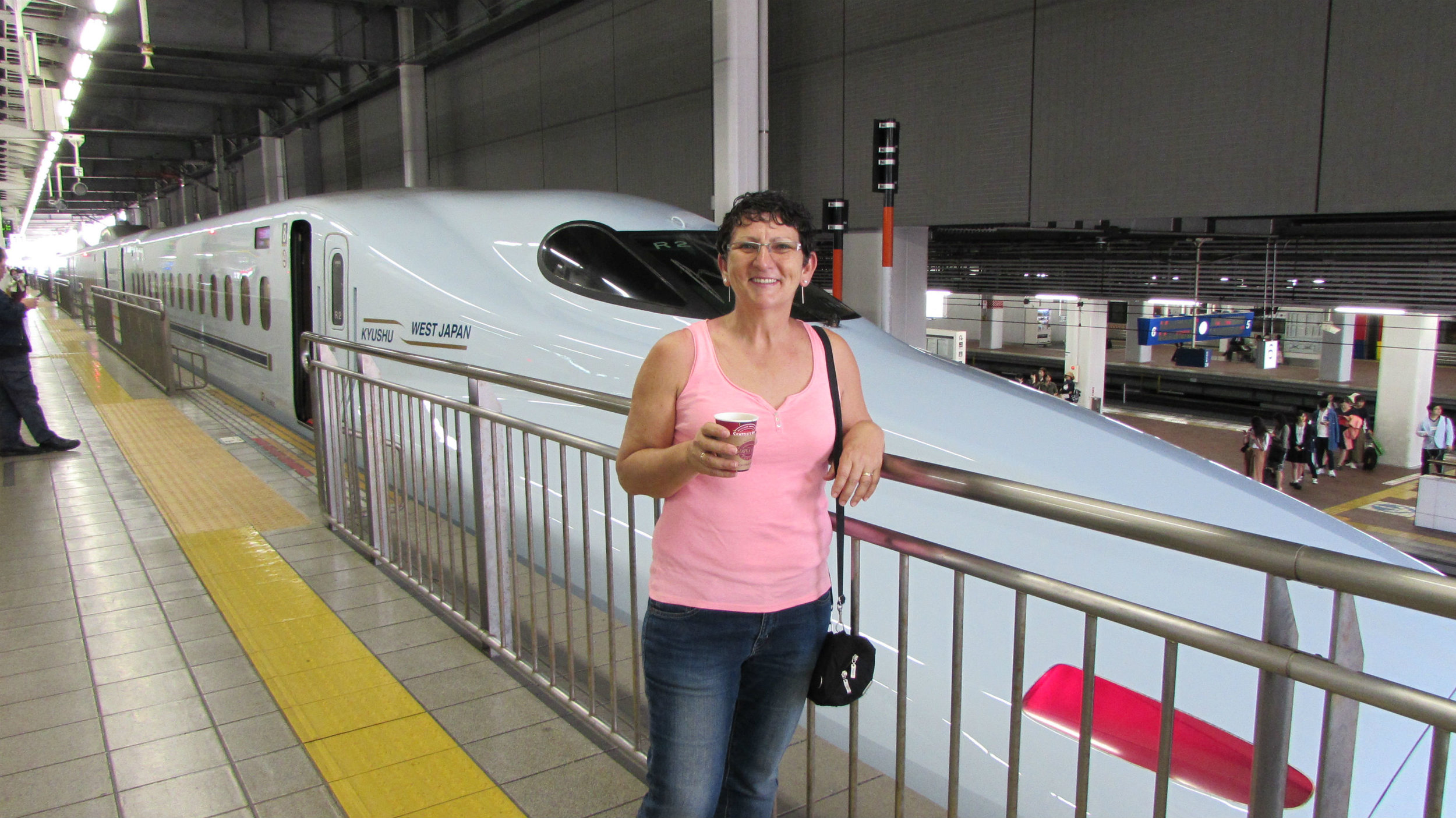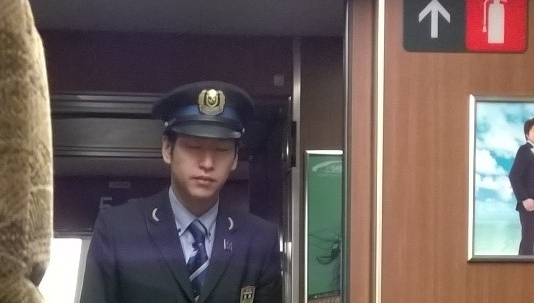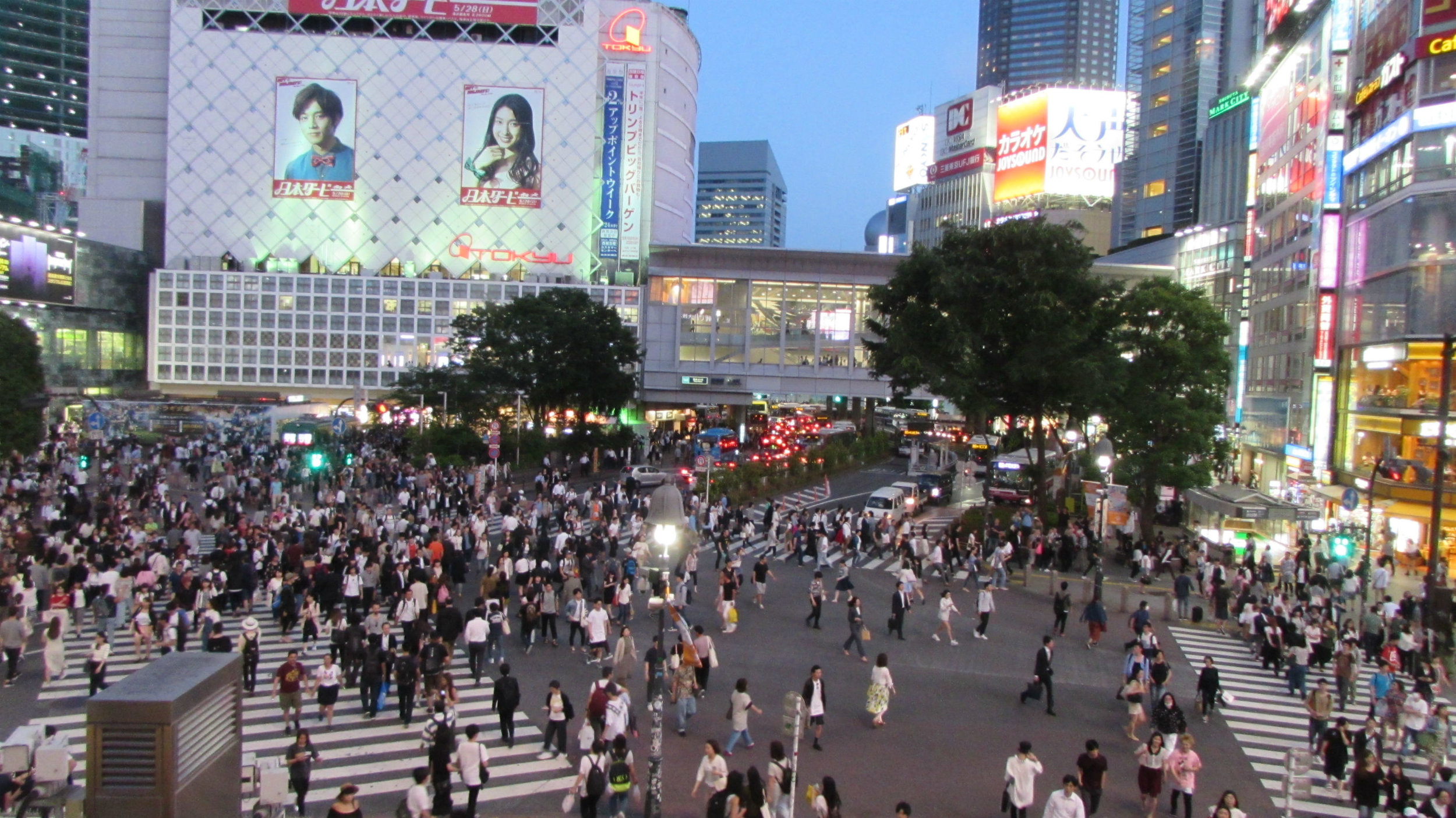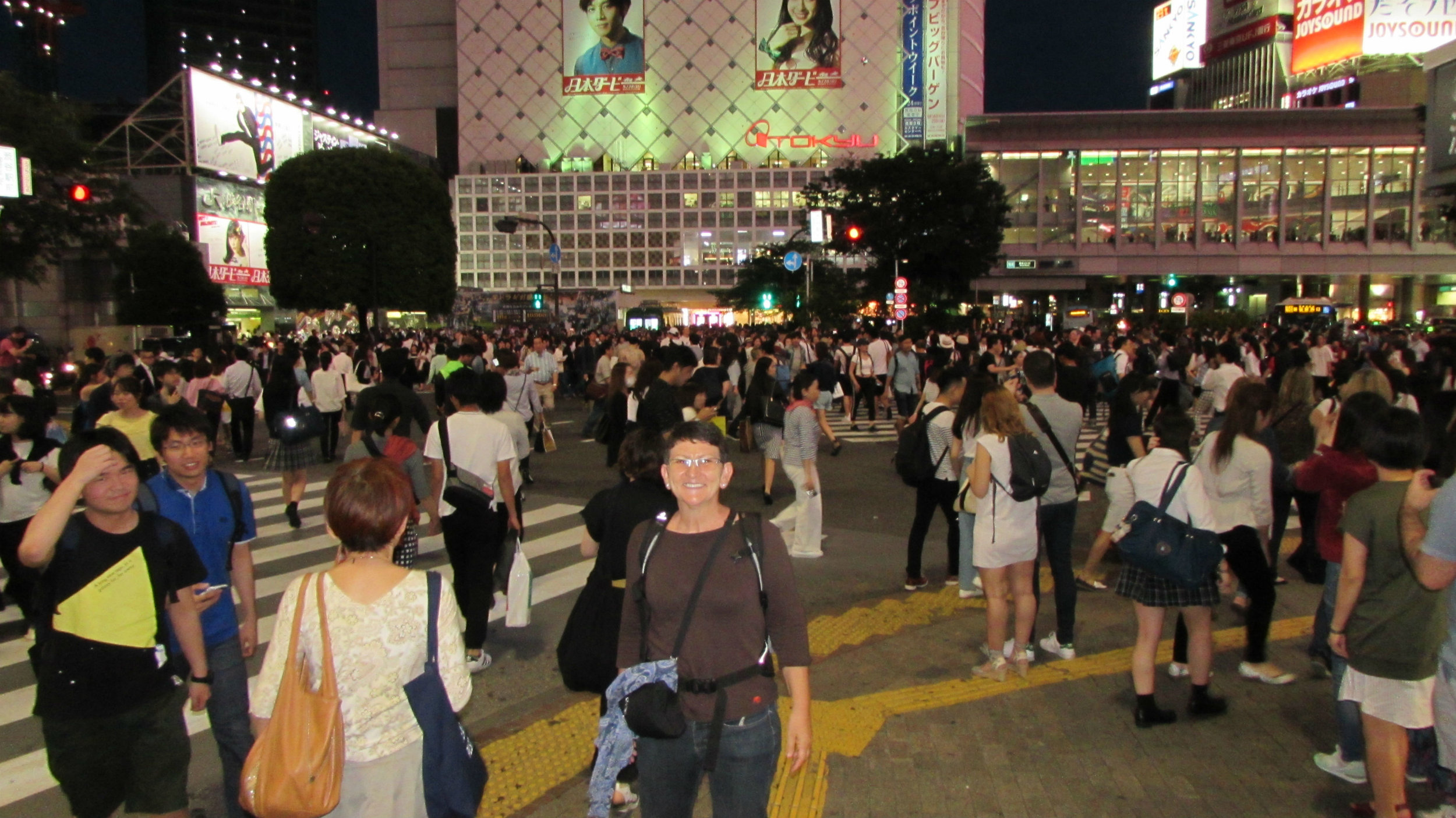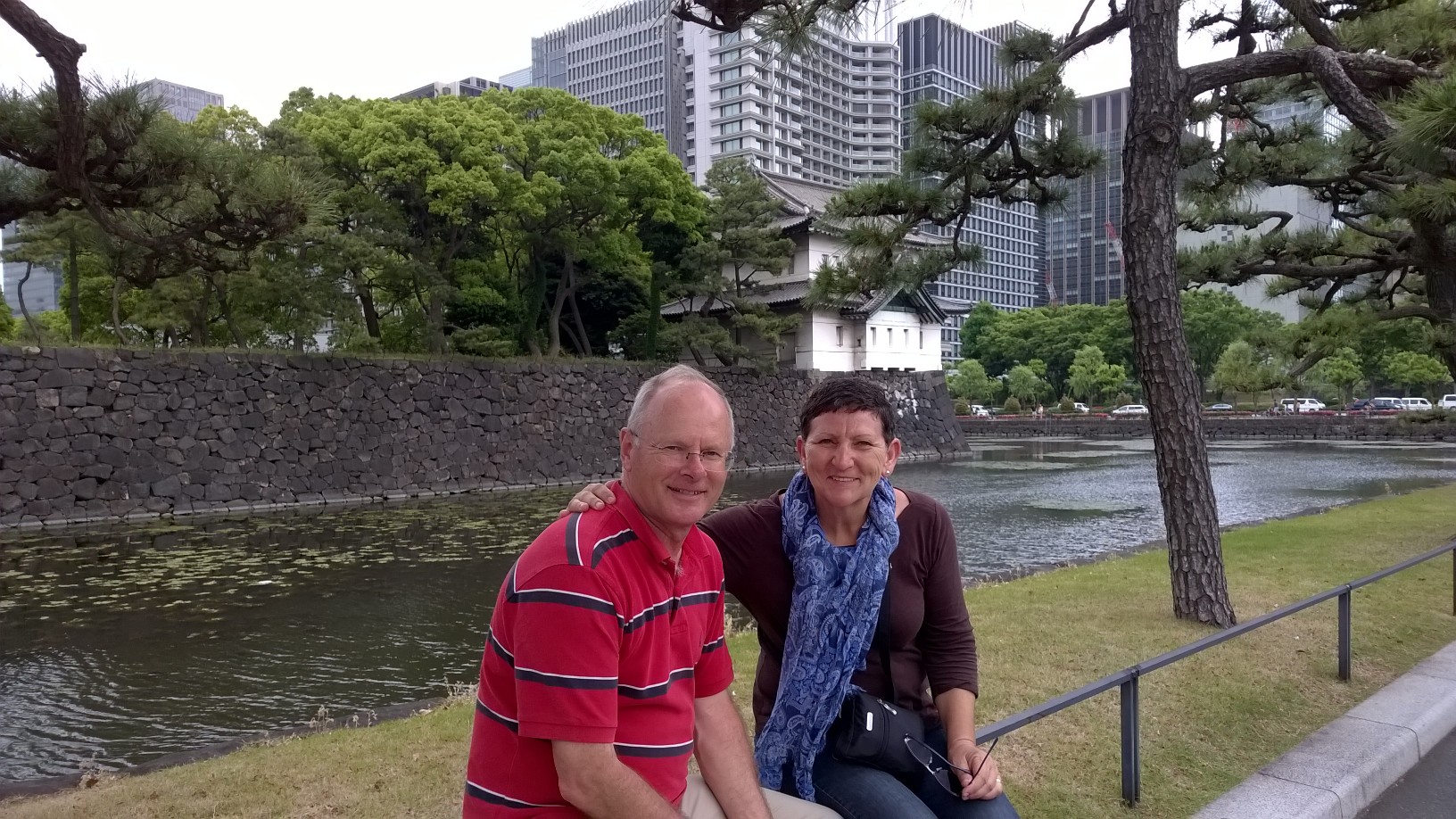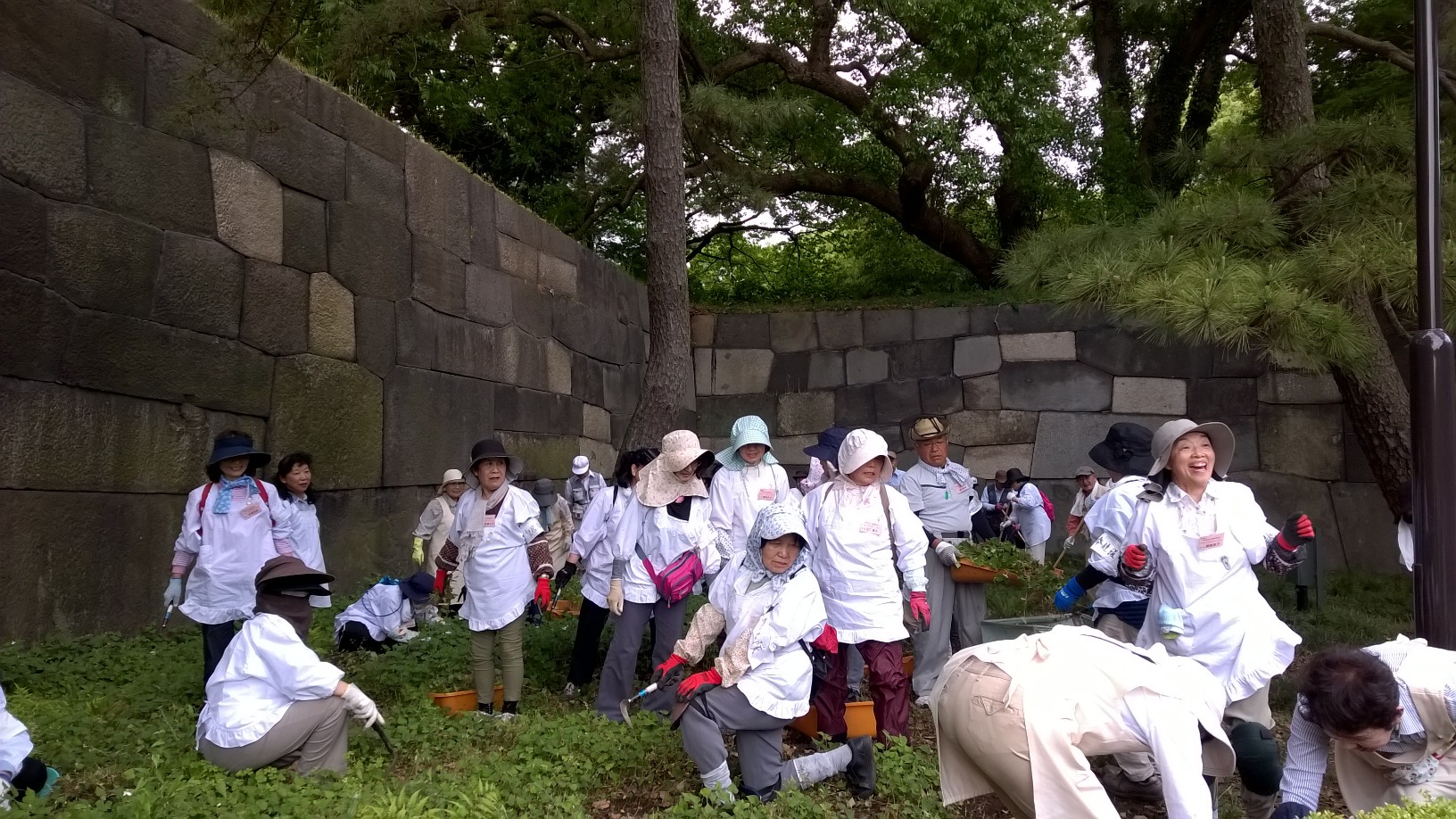Perhaps you have wondered how it be in Japan. In a way, we learned a great deal by simply observing the people going about their day to day lives. The first thing Francien and I noticed at immigration, taxi’s, bus stations, railway stations, parking lots, trafficking and hotels, were people wearing splendid white gloves attending customers, politely bowing all the time. We had barely arrived in Japan when a man standing on the Shinkansen platform in Fukuoka asked us in basic English: ‘Do you like Japan?’. When we acknowledged, he smiled, gently bowed and walked away. The ticket counter attendant sold us a ticket, stood up and politely bowed. In a tram in Hiroshima an old woman spontaneously gave Francien toothpicks decorated with origami paper. Later close to the atomic bomb memorial (I am getting ahead of myself) two ladies approached us: ‘Can we practice our English or German with you?’. We got into a friendly conversation and Noriko and Eriko helped us understand some of the local restaurant menus. ‘Arigato!’. In the train to the Haneda International airport a man approached us and said with a soft voice: ‘I work at this airport and I am honored that you use this airport for your travels’. He bowed and left the train saying: ‘have a safe journey’. The people did not cease to surprise us: when we ate okonomiyaki, sitting on the cooking counter with the cook preparing this thin layer batter with cabbage and various toppings, the people next to us spontaneously offered us to taste their own food! Here we met the most friendly and polite people we ever came across.....
We travelled from South Korea to Japan, crossing the Japanese Sea on a hydrofoil. The only entertainment provided onboard during the four hours cross-over was a Korean game show with Japanese sub titles: that did help much! Once in Japan the language barrier did not get any better. Through-out our three weeks journey on Honshu, English speakers were hard to come by and English signs, menu's, instructions or directions were few. After a while, we yearned to have a normal conversation with someone without having to gesticulate, show pictures and try to guess what it says on the menu or what the person in front of us tried to tell us!
It sounds like a cliché, but yes, so many things are smaller than what we are used to: Cars, houses, parking-lots, trucks. We see parking garages without ramps, but instead with turning platforms and car-elevators. We slept on tatami mats in tiny apartments. In one apartment I could hardly sit on the toilet with closed door, but it had an electronic pad to control temperature and flushing modes. The Japanese brought toilets to the next level; seats with heating, warm water spray-showers and hand wash above the cisterna, synonymous with their love for cleanliness. On the streets, in the restaurants, railway stations, parks and shrines, it all looked very clean and tidy. A few times Francien and I saw people picking up trash from the walkways! (there was hardly any!!!). In Tokyo I saw a food-car standing on top of a plastic sheet to prevent it from staining the street surface and on a railway platform outside Hiroshima a cleaner used a vacuum cleaner to clean the platform.
“Children at school do everyday 15 minutes cleaning duties. There are few trash bins in public places, people take their own trash home.”
The Peace-Park in Hiroshima marks the place where in August 1945 the first atomic bomb was dropped. We mingled with visitors from around the world, experiencing this place in a personal way; sometimes in deep thought, sometimes focusing on selfies in front of the cenotaph, sometimes parents trying to explain to their children something which cannot be explained. Local school children prayed and sang in front of the peace bel. At the crack of dawn I ran 10 km along the river past the atomic dome and many little shrines, plaques, monuments and photo-displays commemorating that fateful event which killed an estimated 140.000 people.
The museum displays showed personal stories of what happened to the people that day: the radiation shadow of a human body on a pillar of a bridge reminded me of the shadow of body I have seen myself after a catastrophic explosion I witnessed in South Africa many years ago. - A sobering experience, trust me. -
Outside Hiroshima we visited the Itsukushima Shrine, dominated by a vermillion colored Torii (gate) standing in the tidal waters of Hiroshima Bay. The shrine was built on stilts above the water so pilgrims do not touch the holy island. Busy with tourists…... In Kyoto we visited 17th century Nijo-Jo castle and Kinkaku Ji temple (golden pavilion in the middle of a pond garden holding Buddha relicts). Again, I gritted my teeth pushing through the tourist hordes! No authentic feeling, only touristic trappings like souvenir shops, rickshaws, selfie spots. Many temples, shrines and castles we have seen embraced their historic splendor as they did the piles of touristic kitsch.
But the Nishi Hongwanji temple in Kyoto was different. At night it was spectacular for its tranquility and size of the two wooden halls. This is a 17th century Buddha temple not mentioned in the tourist brochures. When we returned the next day, we witnessed a funeral ceremony inside the Big Hall of Founder, following an ancient Shinto tradition.
In Gion, a Kyoto neighborhood originally developed in the Middle Ages, we strolled through the old narrow alleys lined with two story wooden houses. We were fortunate to see five Geisha’s (there are only 100 practicing in Kyoto), wearing their heavy white make-up, elaborate hairstyle and colorful kimono’s, walking with small strides to their workplace in one of the private establishments. ‘Unfortunately the tourist industry will suffocate these ancient traditions of the Geisha’s’, I said to our guide who didn’t disagree.
Before entering the Fushimishi Inari Shrine in Kyoto, Francien and I symbolically cleaned our bodies by washing our hands. We watched priests do prayers, tourists ringing the bells (to call the gods) and buying lucky charms. We climbed up the hill past small sub-shrines underneath 1000 Torii's. On top of the 300 meter high hill it was quiet as most tourists didn’t make it that far. On the man-size shrines people had put fruits and flowers as offerings to their gods. Again, here we found a peaceful spot away from it all and we took in the spiritual atmosphere of the place!
Francien and I stayed in Mishima (we love AIRBNB), a town 100 km west of Tokyo and a world away from the tourist hordes. We had close-up views of Mt. Fuji and were the only western people around. Every day a public announcement system was being tested (used to warn for earthquakes). In the evenings we heard the children practicing their music instruments in front of the shrines. On Friday we watched a wedding ceremony in the rustic worship hall of the Mishima Taishi shrine. It was a mixture of traditional Japanese with Western style, attended only be close family members and a few priests.
The underground Kakika river is the source of the many springs in town. Water from Mt Fiji flows through porous lava layers to surface here. In a clear pond inside a small local park, we saw this spring water gushing out, whipping up the lava sand on the bottom. One day we explored the Izu peninsula and hiked along the steep 30-meter-high, tree covered lava cliffs of the Jogasaki coast on. We could see how the land was shaped by volcano's. Ancient lava flows created steep cliffs, washed by the Pacific Ocean. One word: peaceful!
- Let me give you one advice if you ever want to travel to Japan: there are still authentic places, but do not follow Trip Advisor.-
“You do not sense the speed of the Shinkansen. You only feel it when standing on the platform and a train zips by at 330 km/hr; you feel the air pressure and see it in a blink of an eye so to speak..”
We took the Shinkansen (high-speed train) to Tokyo. The conductor bowed before entering and leaving the wagon. Japan takes its time management very seriously. The Japan Railway (JR) train systems are well-known for their incredibly punctual schedules. (in the only English Japanse paper The Japan Times I read last year trains in Japan were delayed on average by 58 seconds)
Taking the Shinkansen
First thing we noticed in bustling Tokyo were men and women wearing black business trousers and white shirts going about their work. In a coffee shop at the station it seemed everyone was working on their laptops. We elbowed our way across the pedestrian crossing at Shubija (the busiest in the world!). It felt like organized chaos when the lights turned green: five streams of up to 3000 people crossed the avenues, lit-up by flashing billboards (reminding me of Times Square in New York). Tokyo felt like a clockwork; people, cars, trains, underground, buses and taxi’s zipping through this high-density metropolis somehow without hitting each other.
By and large we only saw Japanese shops, banks, eateries and brand names. New buildings and futuristic architecture determined the skyline of the financial district. The gardens of the Imperial Palace were immaculate, with artfully pruned trees with cloud shapes foliage. The ancient walls and moats impressive for their size.
We did not argue with this guy...
The backdrop with the glittery high-rises of the financial district was an example of a culture between old traditions and futuristic aspects. This contrast we have seen many times on this journey. In a hotel lobby in Kyoto a robot greeted us with a tablet on which we could communicate where as in Tokyo we watched Sumo wrestlers walking on wooden sandals from the stadium to their stables, dressed with traditional colorful cotton robes and their hair tied as a topknot.
In the financial district, we watched business men performing their traditional ritual of handing out business cards, having just visited the ultra-modern Tokyo stock exchange. (no traders on the floor anymore, only a few people on screens on-line checking the integrity of the trading).
Japan, we will remember the cleanliness, its high-speed trains, its contrasts, Hiroshima, its Zen-Buddhist temples and Shinto-shrines and not to forget graceful Mt Fuji. But more than anything, we were fascinated by the incredible friendly and polite people.

